After a pretty nice time I spent in Spain (!), more precisely in the Spanish enclave of Melilla, I returned to Morocco, to the city of Nador, where I caught an intercity coach that took me to Fes.
These two cities are about 315 km apart, which meant the coach ride would take a while.
Here is a map showing all the places I visited during this trip through Morocco (and Spain!) back in 2010.
I was once again passing through areas that were very green. I thought it was because these regions are near the Mediterranean Sea, so they probably get more regular rainfall. However, I later saw that even on the southern slopes of the Rif Mountains there are plenty of wheat fields and olive groves.
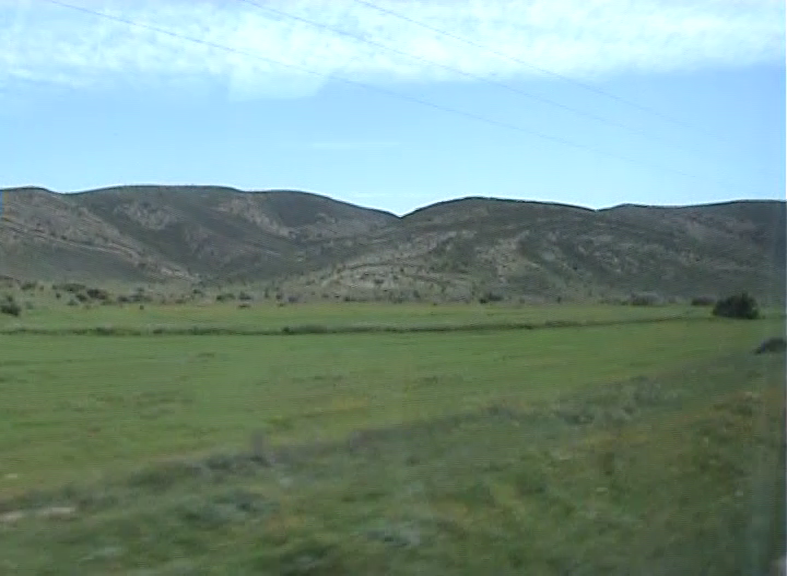 On the way from Nador to Fes
On the way from Nador to Fes
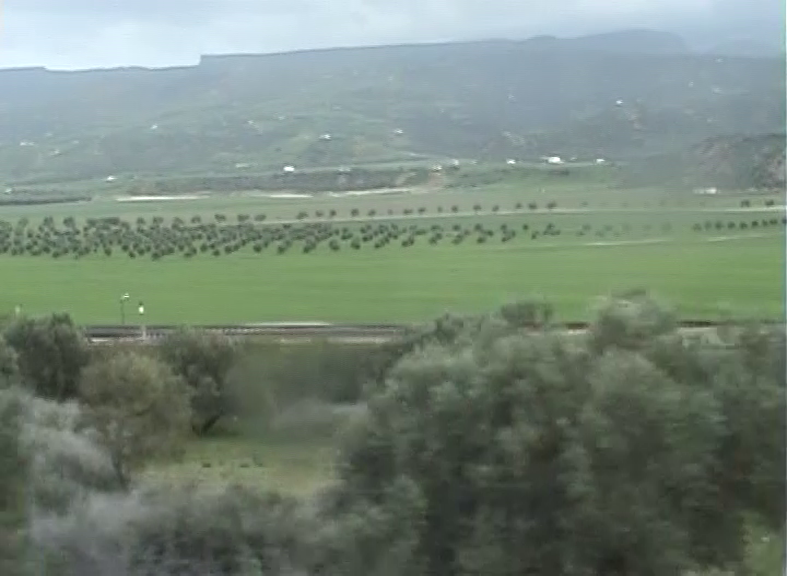 On the way from Nador to Fes
On the way from Nador to Fes
Along the way, we also passed through settlements, so I took a few photos from the coach or recorded with a video camera, and later made photos based on that.
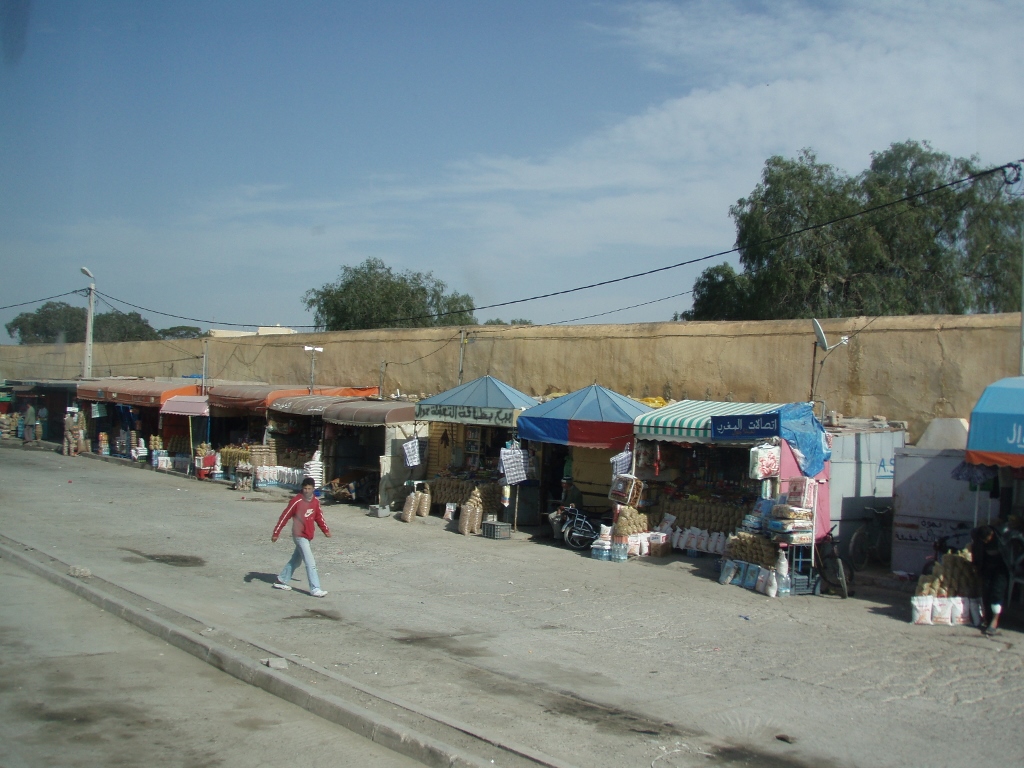 On the way from Nador to Fes
On the way from Nador to Fes
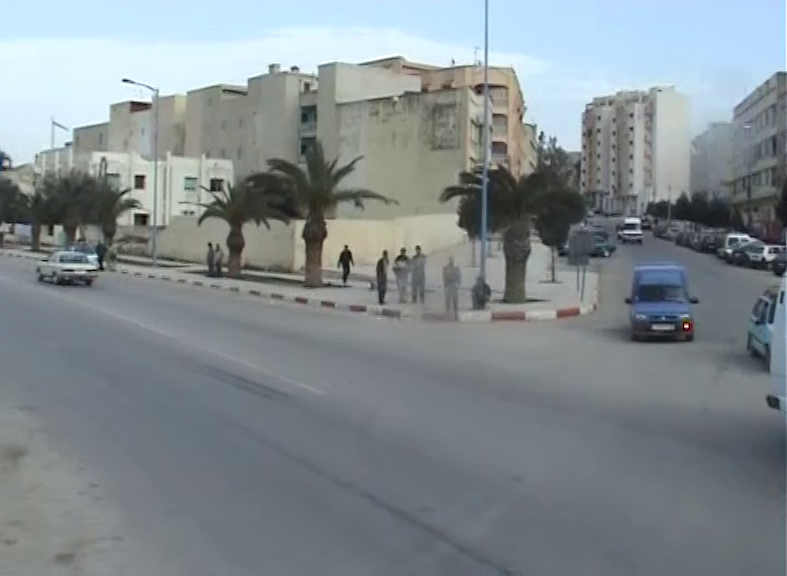 On the way from Nador to Fes
On the way from Nador to Fes
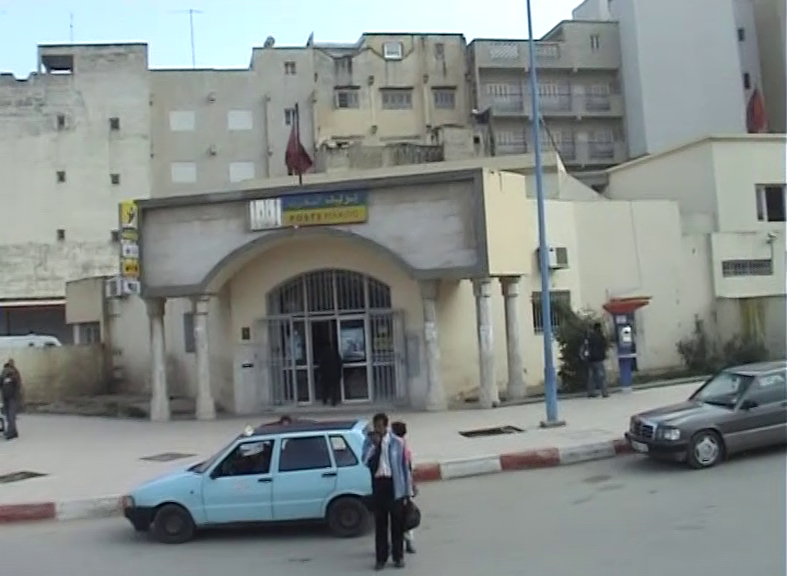 On the way from Nador to Fes
On the way from Nador to Fes
As it turned out, the coach didn’t enter Fes, bur rather dropped me off on the far outskirts of the city. However, that’s apparently standard practice, since there were taxis available and I took one that brought me to the hotel I had chosen.
Once again, the arrival in the city was later than scheduled and by the time I reached the hotel and settled in, it was already dark. Still, the part of the city where I was staying felt very lively in the best possible way. My hotel was located on one of the main streets in Ville Nouvelle or the New Town, and there I had “everything.” Restaurants, pastry shops, and internet cafés.
I first went to get something to eat and drink—specifically, I had an avocado juice, which turned out to be surprisingly delicious.
By the time I had finished, I could feel the tiredness catching up with me. After a visit to an internet café, I was ready to retreat to my room and go to sleep. For the next day, I planned to explore Fes and its Medina.
Fes was founded between 789 and 808 CE, and it reached its peak in the 13th and 14th centuries. The main cultural monuments within the Medina date precisely from this period, when the Marinid dynasty ruled.
Interestingly, Fes served as the capital several times under different dynasties – once in the 10th century, then from 1244 to 1465, from 1465 to 1471, and from 1471 to 1554 (these three periods followed one another but involved different dynasties), then on three occasions during the 17th century, and finally from 1727 to 1912. In the early 20th century, the capital was moved to Rabat, but Fes remained the cultural and spiritual centre of the country.
In line with this the Medina in Fes is a cultural heritage site inscribed on the UNESCO World Heritage List, which definitely made it worth exploring on foot. The Medina includes the original city (Fes el-Bali), as well as the newer part of Fes (Fes Jdid), founded in the 13th century to the west of the original settlement. Fes Jdid should not be confused with Ville Nouvelle, the modern part of the city located southwest of the Medina.
In any case, with the founding of Fes Jdid and its merging with Fes el-Bali, one of the largest Islamic metropolises was formed. Within the Medina, there are numerous civil, military, and religious structures, built and decorated in a variety of styles Oriental, Andalusian, and African. The result is an extraordinarily rich archaeological, architectural, and urban heritage. Today, the Medina in Fes is one of the best-preserved old cities in the Arab world.
One of the things I read before visiting the Medina, and here I particularly think of the Fes el-Bali part, was that the streets are so numerous (there are around 9,000 in the entire Medina!!!), narrow, winding, and even dead-ended, that a visitor can very easily get lost. Let me say right away that I felt completely at home in Fes – I didn’t get lost for even a single moment, and in fact, I had the feeling that everything was somehow familiar and clear to me. It was so striking that ever since then, I’ve lived with the conviction that I must have spent a past life here.
By the way, I should mention that in Marrakesh, whose Medina is said to be easier to navigate, I did get lost and went in circles several times. But I’ll write about that later.
For now, I’ll just mention that I got up relatively early in the morning, but I didn’t rush out into the streets right away. And when I did leave the hotel, I was greeted by a beautiful day and lovely sights along Hassan II Avenue.
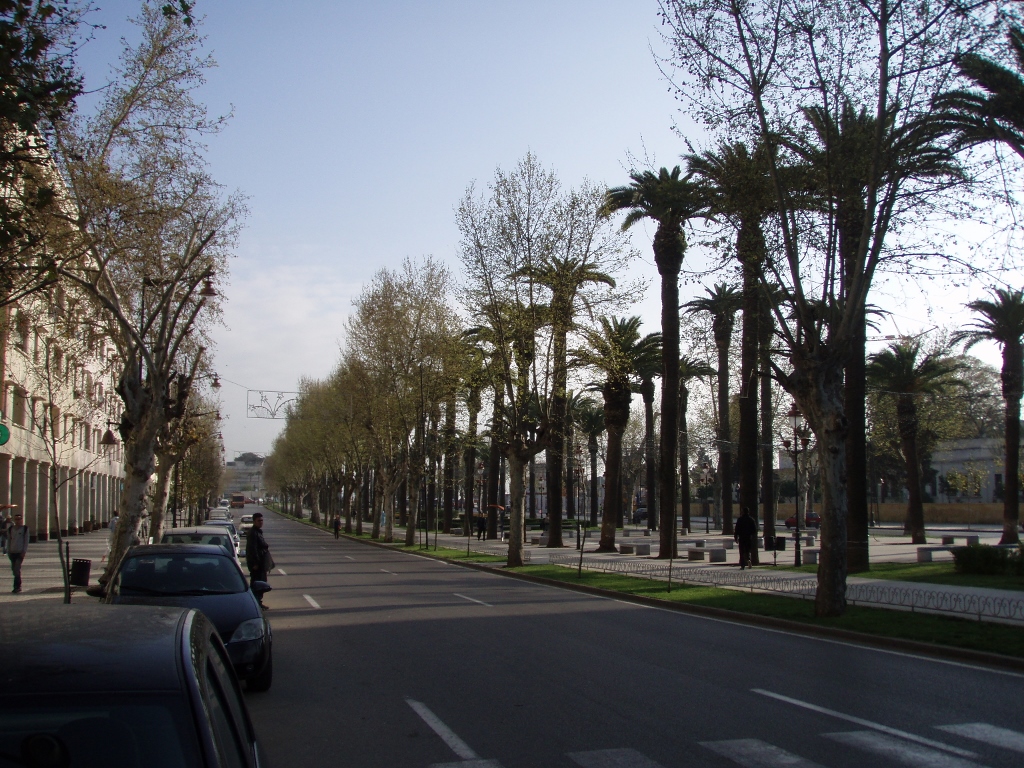 Fes, a detail
Fes, a detail
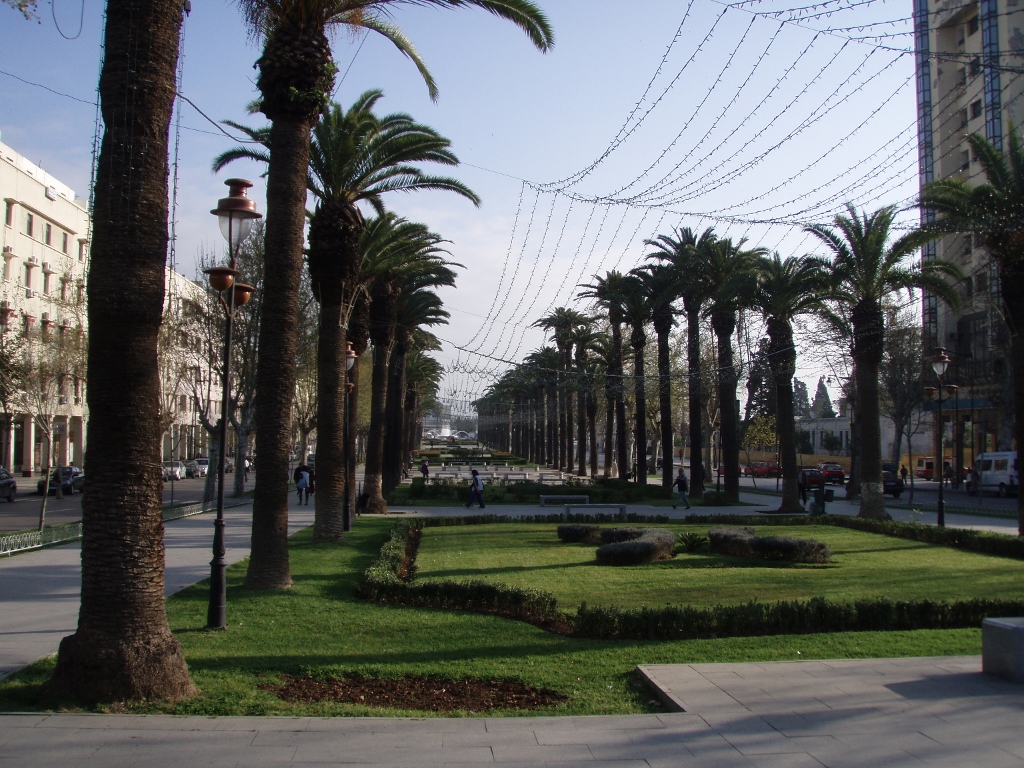 Fes, a detail
Fes, a detail
Without rushing, I went to a pastry shop for breakfast – two sweet puff pastries in different variations and a coffee. By the way, I really liked the coffee in Morocco: they pour a strong coffee concentrate into the bottom of a cup or glass, and then top it generously with boiled milk.
I enjoyed the fact that this was a “free” day in the sense that I wasn’t travelling by coach anywhere. I had gotten a bit tired of that. However, since the station for the good coaches (CTM company) was nearby, I went there before breakfast to ask about the transfer for the following day, but it turned out they didn’t have a daytime coach to Erfoud. Still, I didn’t want to spend the night on a coach, especially since I would arrive in some small town at dawn not knowing what to do, which would take up my whole day (I had very specific plans for Erfoud that required a very early morning and a sunrise, but not to be on a coach at that time). I figured it was better to sleep in a bed and then deal with the long ride (about 11 hours) and the heat. On the other hand, I thought I’d at least be able to see something along the way.
As for Fes, I should say something about Ville Nouvelle, the part of the city where I stayed. As the name suggests, this part of the city was built by the French during the colonial period. Although the French showed interest in Morocco as early as the first half of the 19th century, they officially established their colony here from 1912 to 1956 under the name French Protectorate in Morocco.
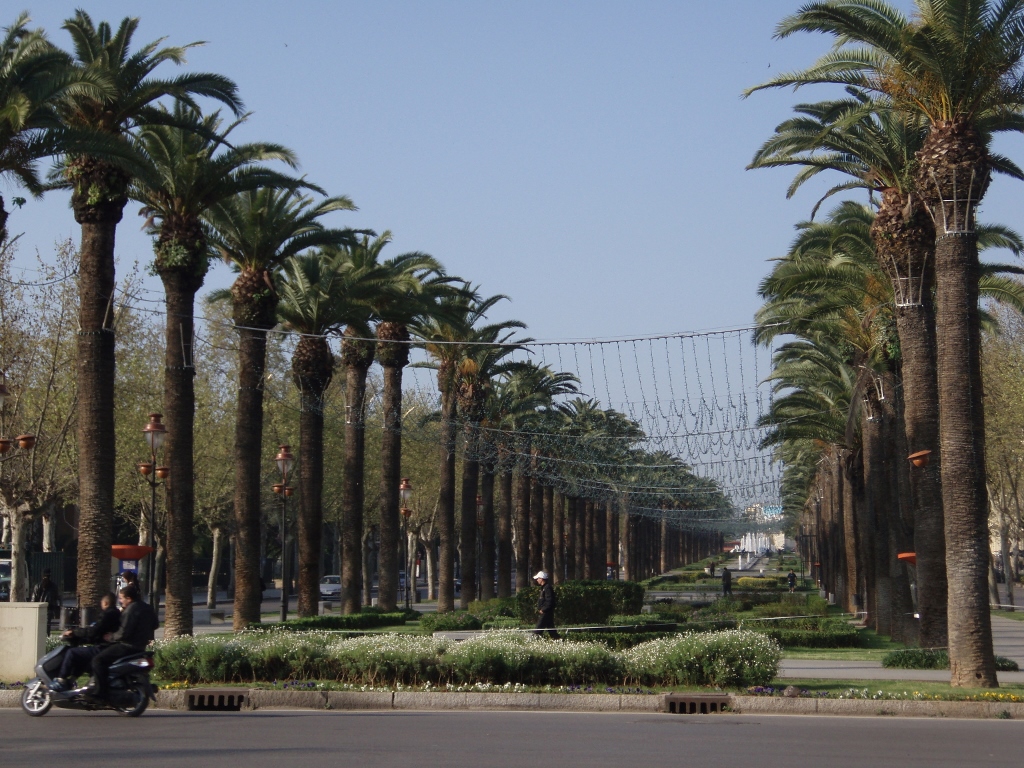 Fes, a detail
Fes, a detail
The French influence can still be seen today – primarily in the widespread use of the French language, both in speech and in the names of streets and buildings, as well as in the names of various products sold at the market.
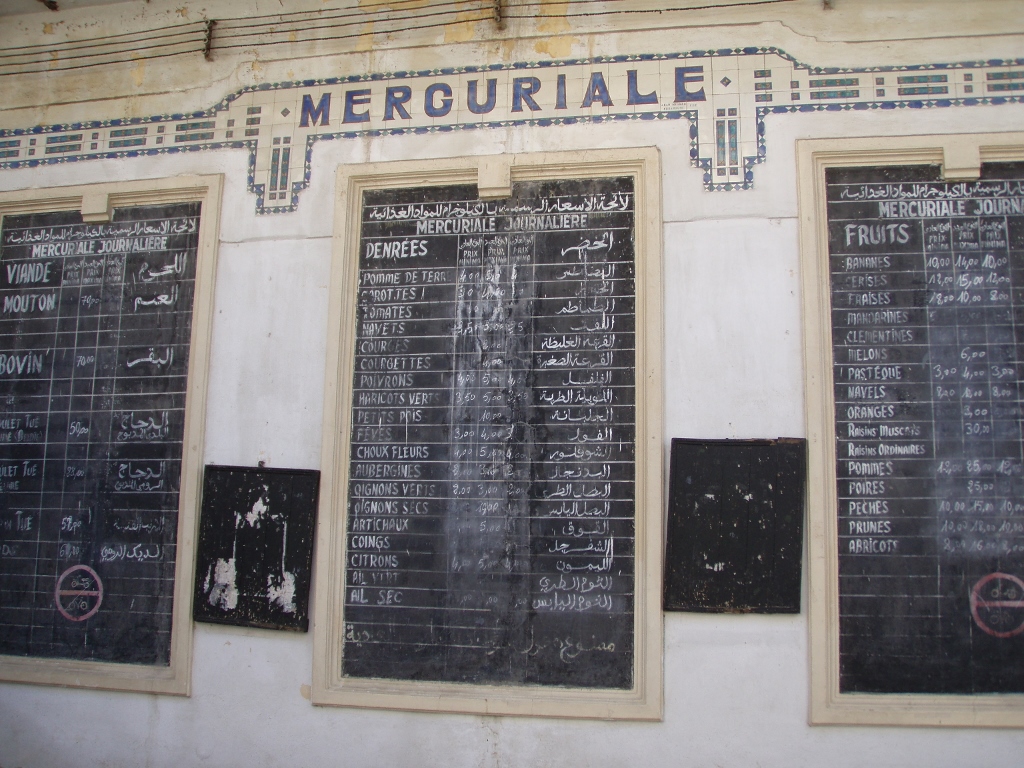 Fes, a detail
Fes, a detail
While I was walking to the CTM coach station and then back to have breakfast, I also filmed parts of Ville Nouvelle, as well as the lovely promenade-park that runs along Hassan II Ave.
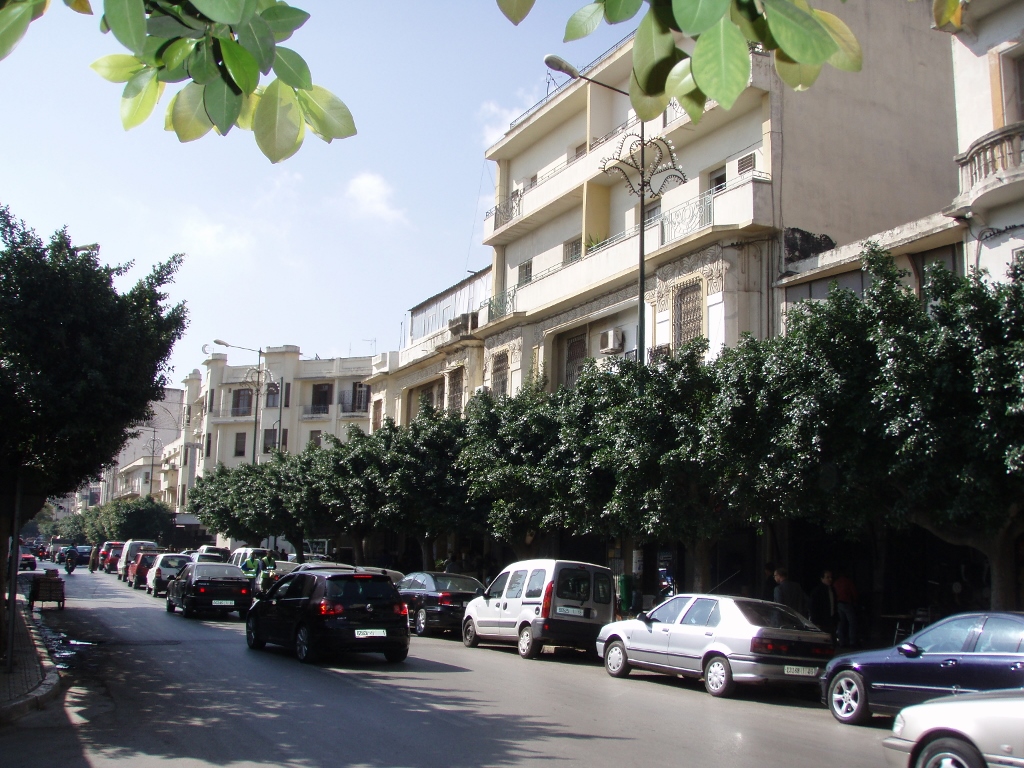 Fes, a detail
Fes, a detail
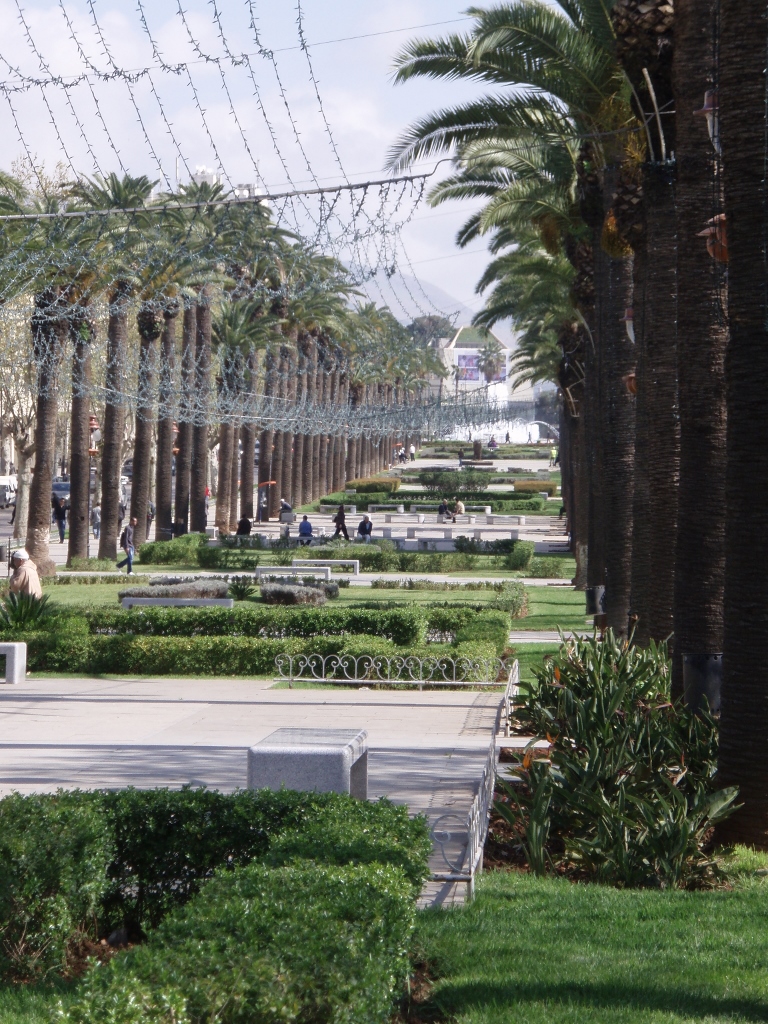 Fes, a detail
Fes, a detail
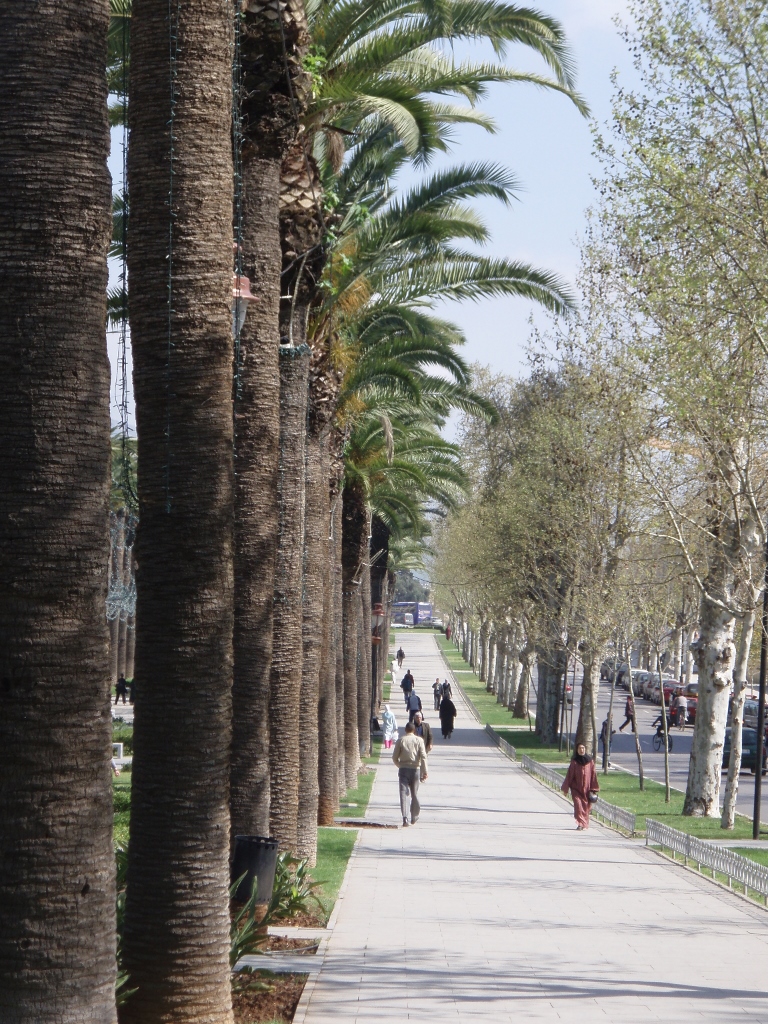 Fes, a detail
Fes, a detail
Then I took a taxi to get to the coach station that serves various companies operating intercity routes, because I wanted to inquire and possibly buy a ticket for the next day right away so I could relax. As was the case in Meknes, in Fes these coach stations I’m mentioning are located on opposite ends of the city as well, with the “mixed” coach station here also situated “behind” the Medina. Going there gave me a chance to see parts of the city along the street that runs along the northern side of the Medina in Fes.
The ticket was soon purchased, and as I headed towards the Medina, specifically towards Fes el-Bali, I filmed the area north of the old city. In addition to the fortifications visible on the right side of the next photo, the Marinid Tombs from the 14th century (located in the upper left of the photo) also stand out. These are the graves of sultans from the Marinid dynasty. I didn’t go there.
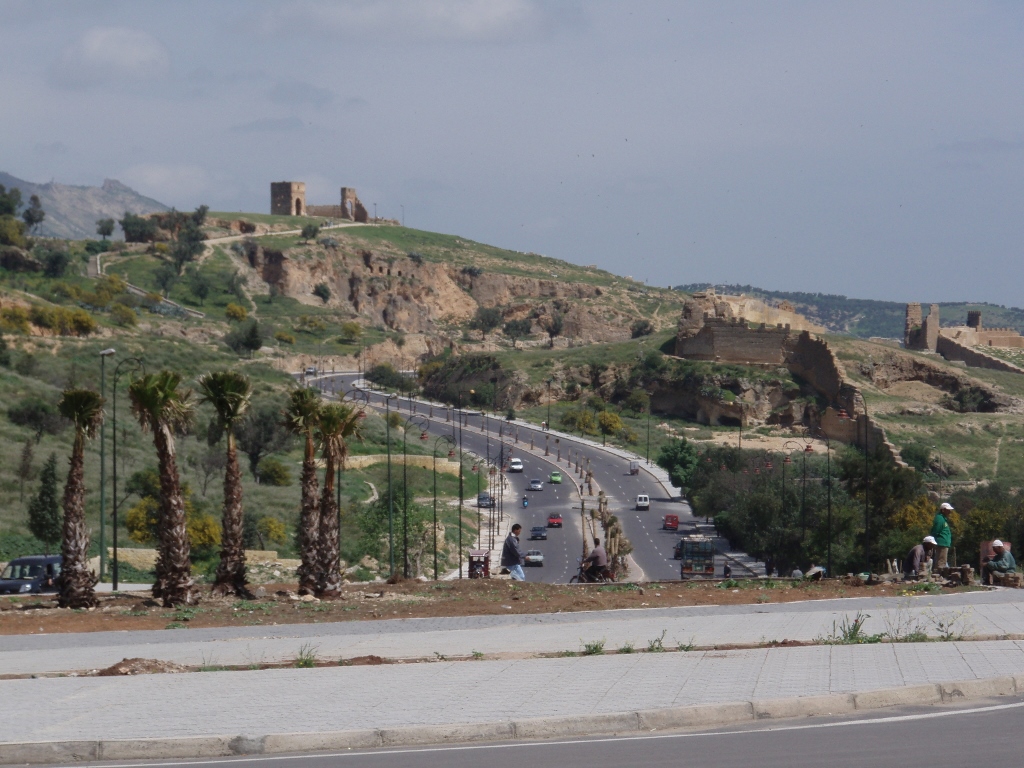 Fes, a detail
Fes, a detail
I entered Fes el-Bali through the historic main western city gate, Bab Mahrouk, which was built in 1204.
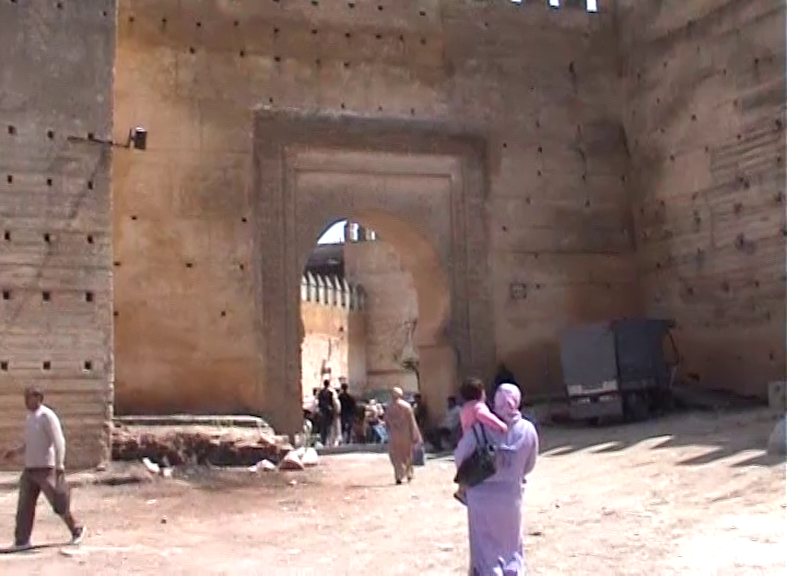 Fes, a detail
Fes, a detail
I captured it as well from the other side, where it was illuminated by the sunlight.
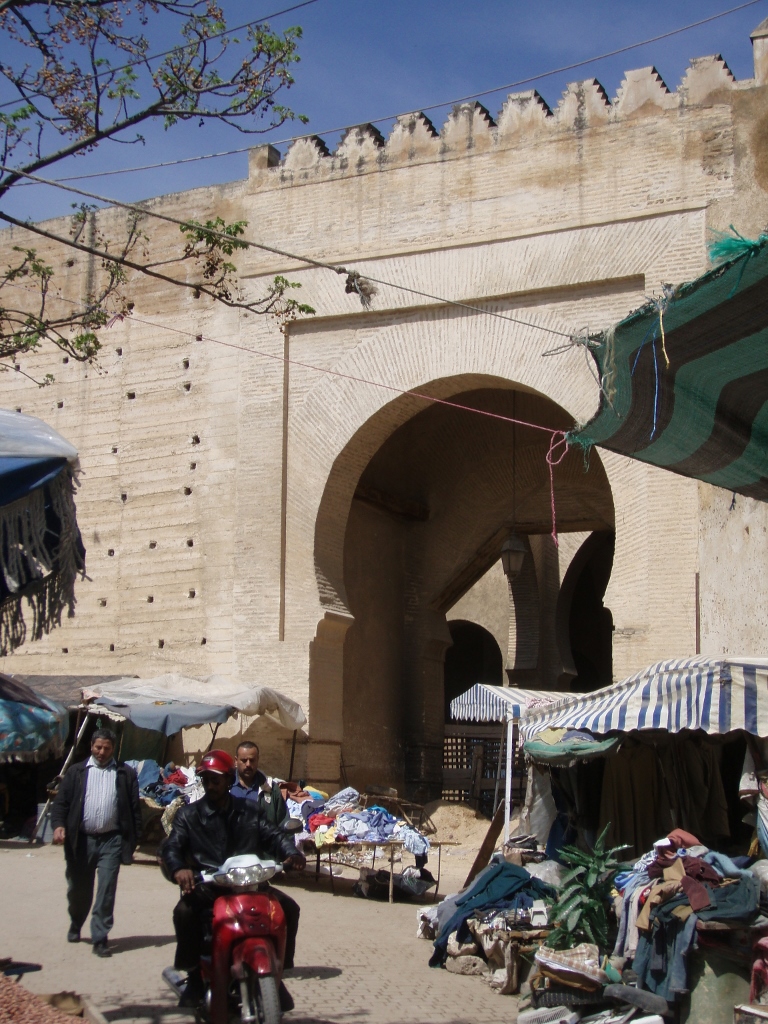 Fes, a detail
Fes, a detail
I also passed by the Bab Chorfa gate in the walls surrounding the Kasbah an-Nouar, but I only filmed it from the side.
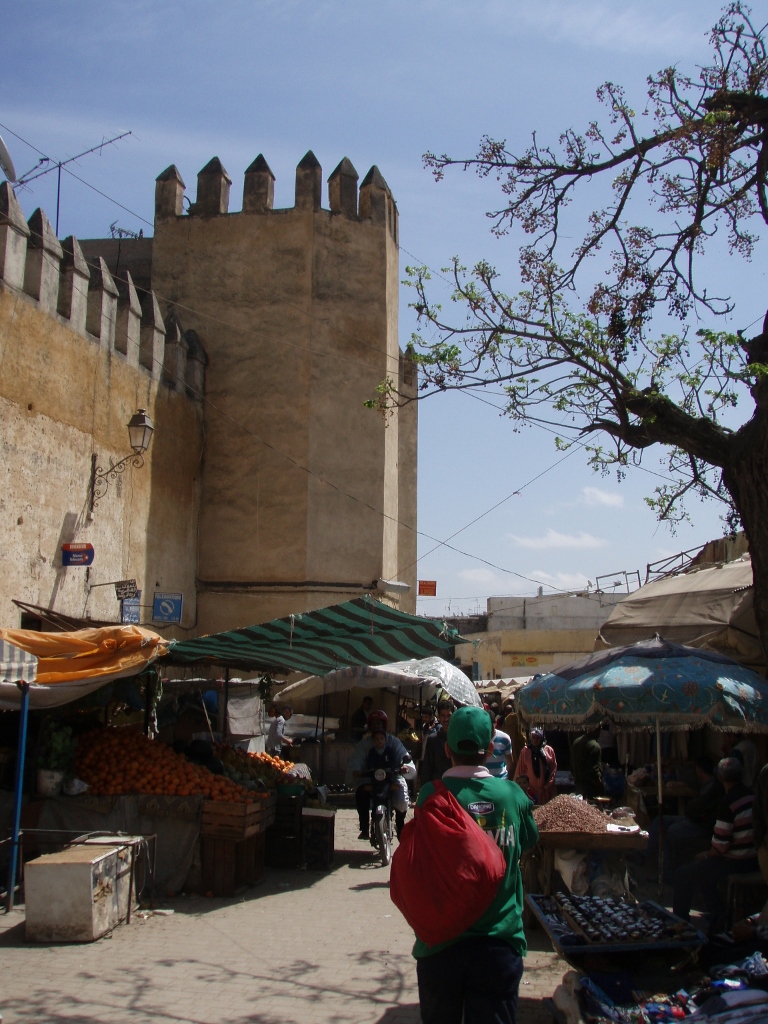 Fes, a detail
Fes, a detail
By the way, Kasbah an-Nouar was once the military part of the city, surrounded by high walls, but over time, it became populated by members of a specific local community. Until the end of the 20th century, entry to this part of the Medina was prohibited for non-Muslims, though I’m not sure what the situation is like today. In any case, I was amazed by the market that operates here regularly, so I didn’t pay much attention to the impressive Bab Chorfa gate or the nearby large Boujloud Square (Place Boujloud).
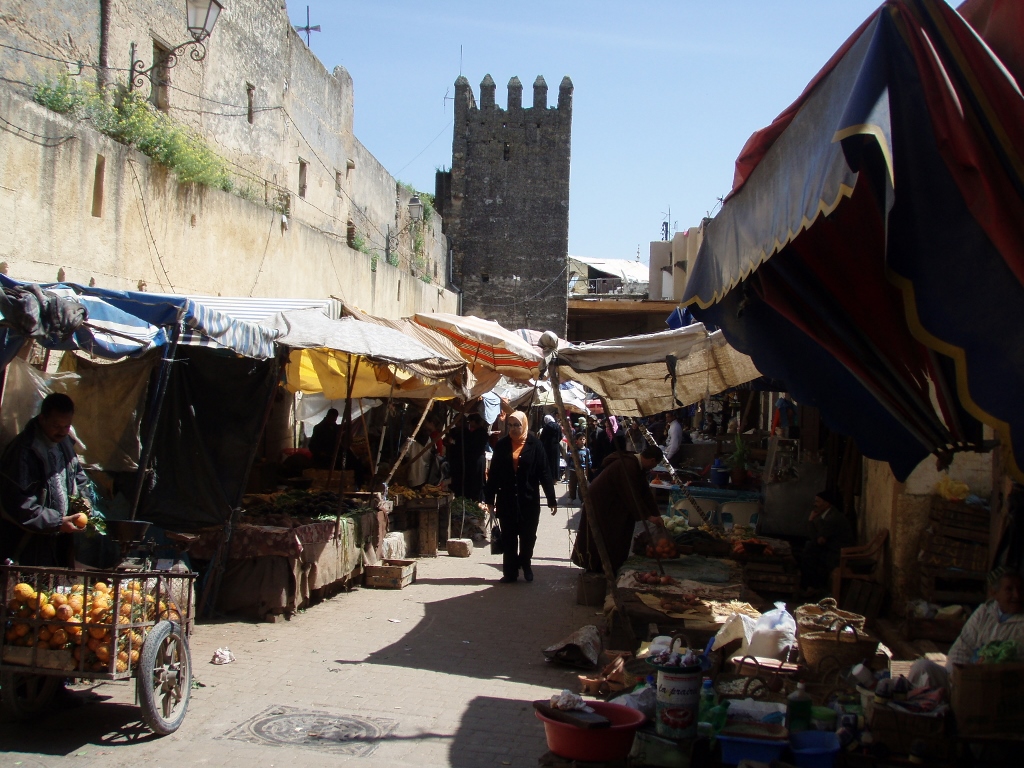 Fes, a detail
Fes, a detail
Although on the one hand I regret not paying more attention to certain parts of the Medina, at the same time I understand why I was so captivated by the details of the market set up beside the centuries-old walls. If just a few modern elements were erased from the picture, one could almost believe the photo was historical – taken, for example, a couple of centuries ago.
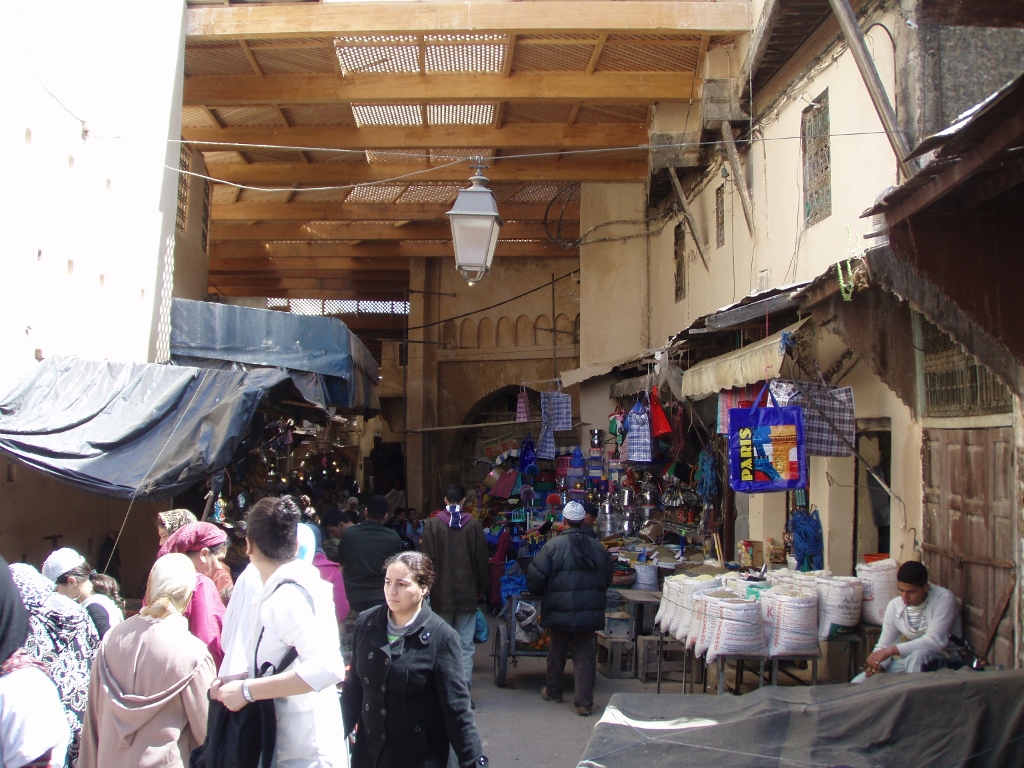 Fes, a detail
Fes, a detail
Also, although I felt very good and comfortable in Fes, with that intense feeling that I was "at home," to this day I still have the impression that I didn’t explore the city thoroughly enough or stay there long enough. When I think of Morocco now, I wish to visit a few places I didn’t see in 2010, but I’d also love to return to Fes. At least for a couple of days.
In any case, during my walk in 2010, I soon came to the exceptionally beautiful Bab Bou Jeloud gate, which serves as one of the main entrances to the Medina.
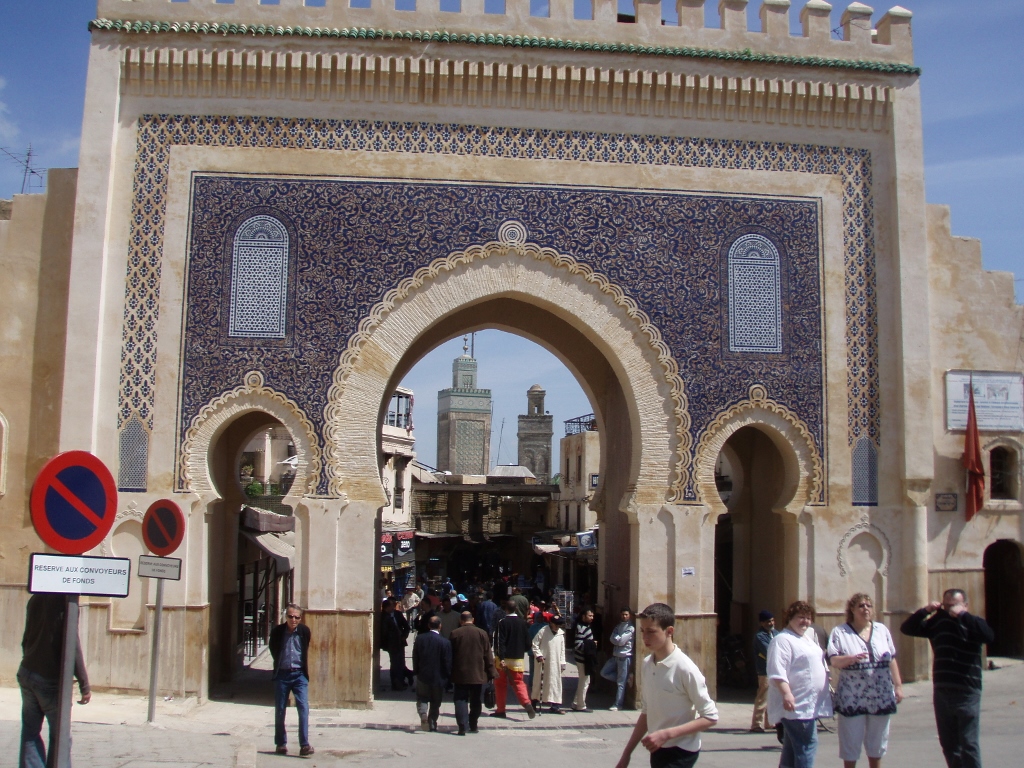 Fes, a detail
Fes, a detail
Although I’ve already mentioned that the Medina in Fes is the old part of the city, this gate is of a more recent date – it was built in 1913. It serves as an entrance specifically into Fes el-Bali and through it one can also see the minaret of the Bou Inania Madrasa.
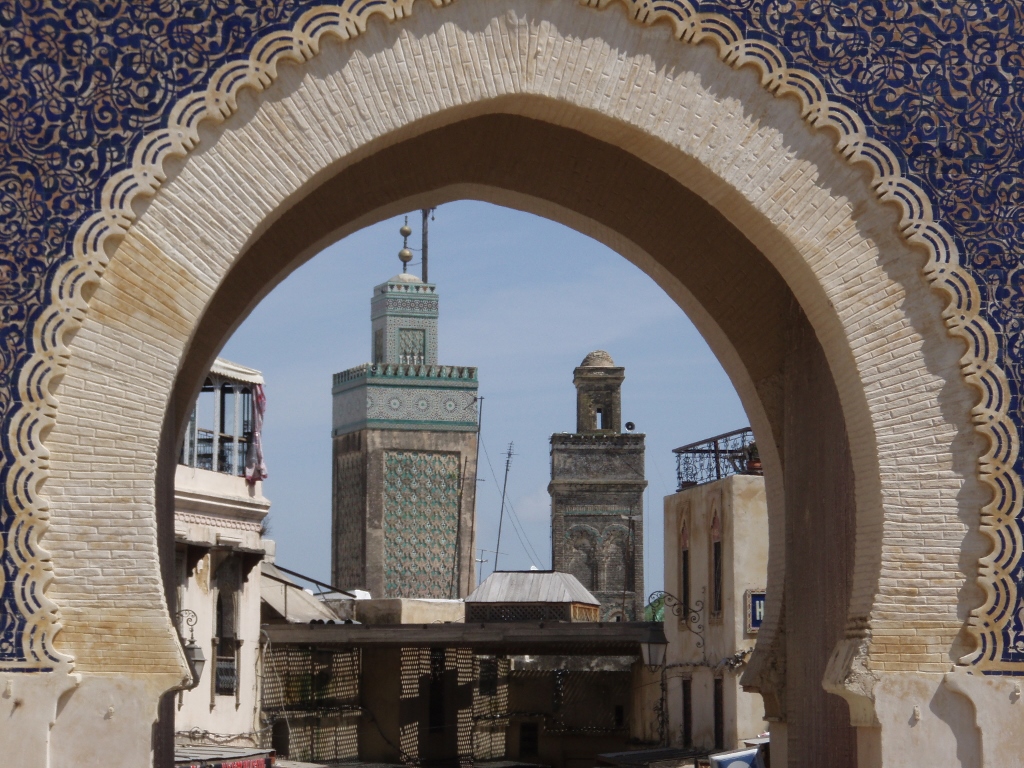 Fes, a detail
Fes, a detail
That feeling I had of being “on home ground” here wasn’t just a product of my imagination. Shortly after passing through the gate, I turned off in one direction and soon realised it wasn’t the way I wanted to go. Wanting to return to the main path, I found a shortcut and successfully continued on. A very important detail is that in 2010 I didn’t have Google Maps – only a very basic map in my guidebook, which certainly didn’t show the various side streets and shortcuts. I was extremely satisfied and proud of myself for navigating so well.
Just before reaching the Bou Inania Madrasa, on the opposite side of the street, is Dar al-Magana, a 14th-century house the street-facing façade of which features a water clock. It’s hard to photograph it well because the street is narrow, but as far as I understood, the corbels, the windows above them, and the additional brackets further up are all part of this complex and once-functional hydraulic mechanism.
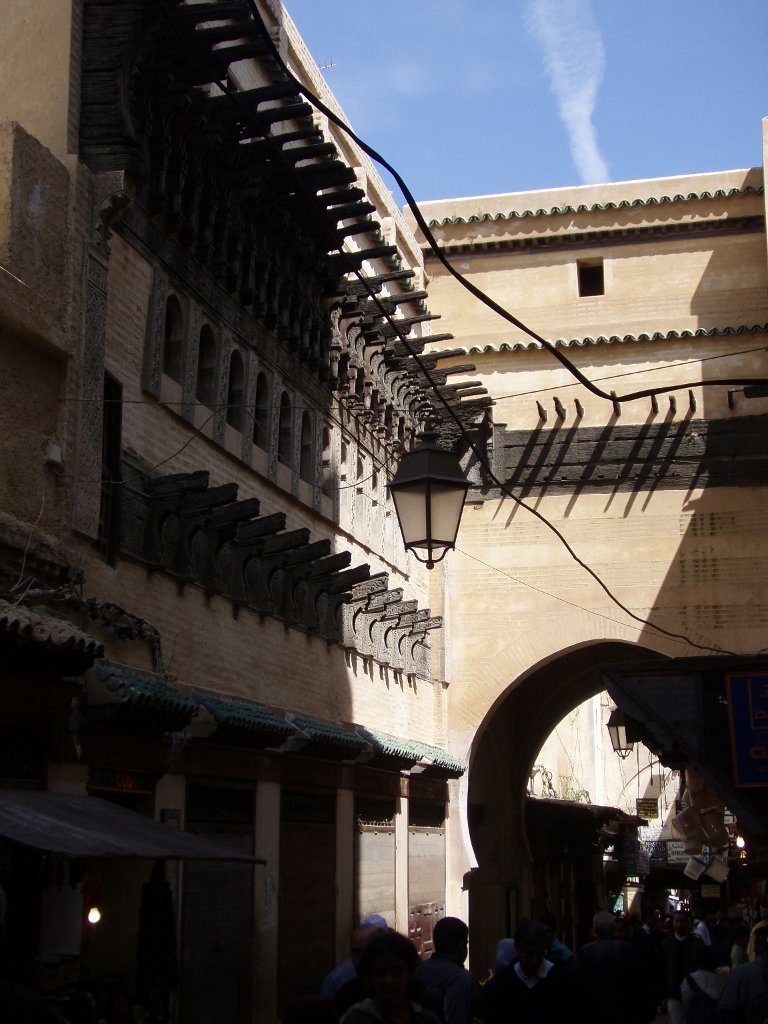 Fes, a detail
Fes, a detail
As for the Bou Inania Madrasa, built between 1350 and 1357, which is not only a theological school but also functions as a mosque, I was told not to take pictures there, so I just peeked into the inner courtyard. It was Friday, the holy day for Muslims, so I thought they might be a bit stricter on that day. The mosque, in any case, is not open to non-Muslims, but the madrasa can be visited during the day, except during prayer times.
So, I only briefly filmed over the entrance with my video camera and later made a photograph from that footage.
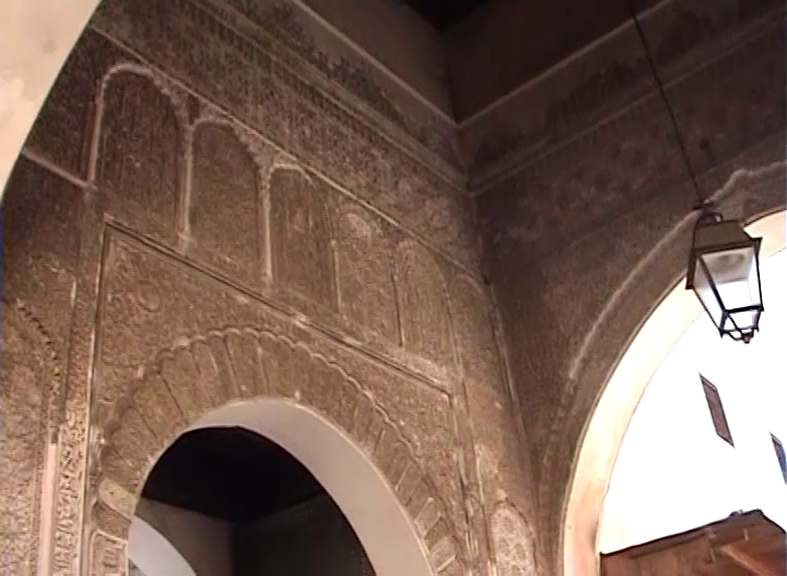 Fes, a detail
Fes, a detail
I then continued my leisurely walk along one of the main streets in Fes el-Bali, which is At-Talaa al-Kebir.
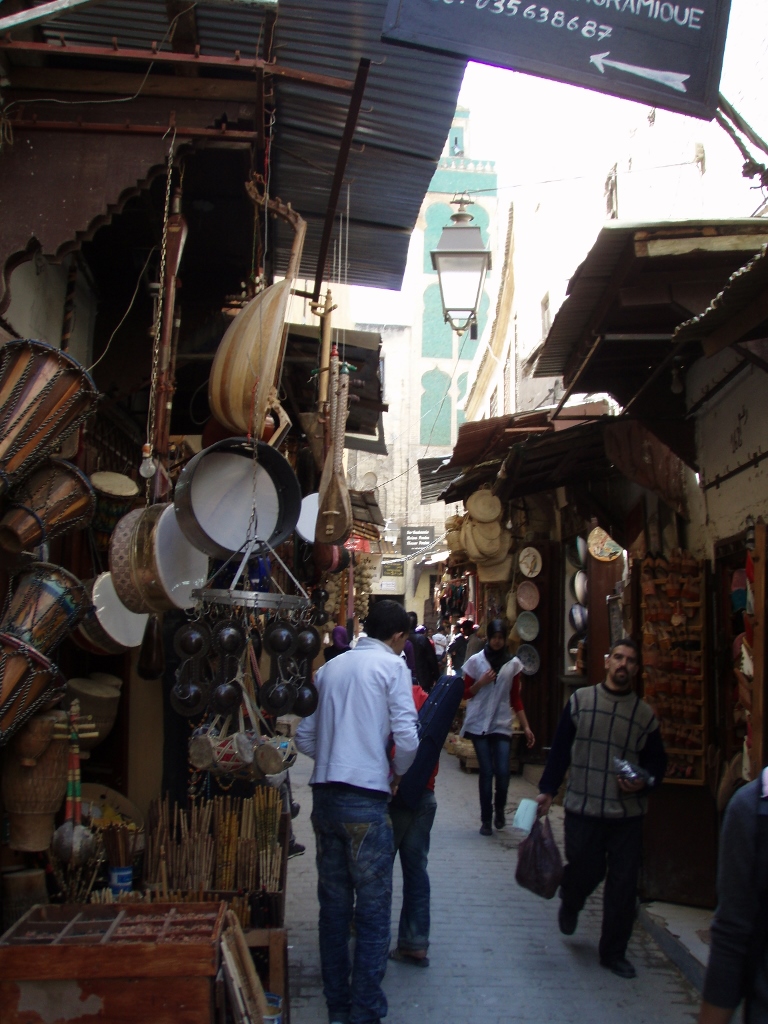 Fes, a detail
Fes, a detail
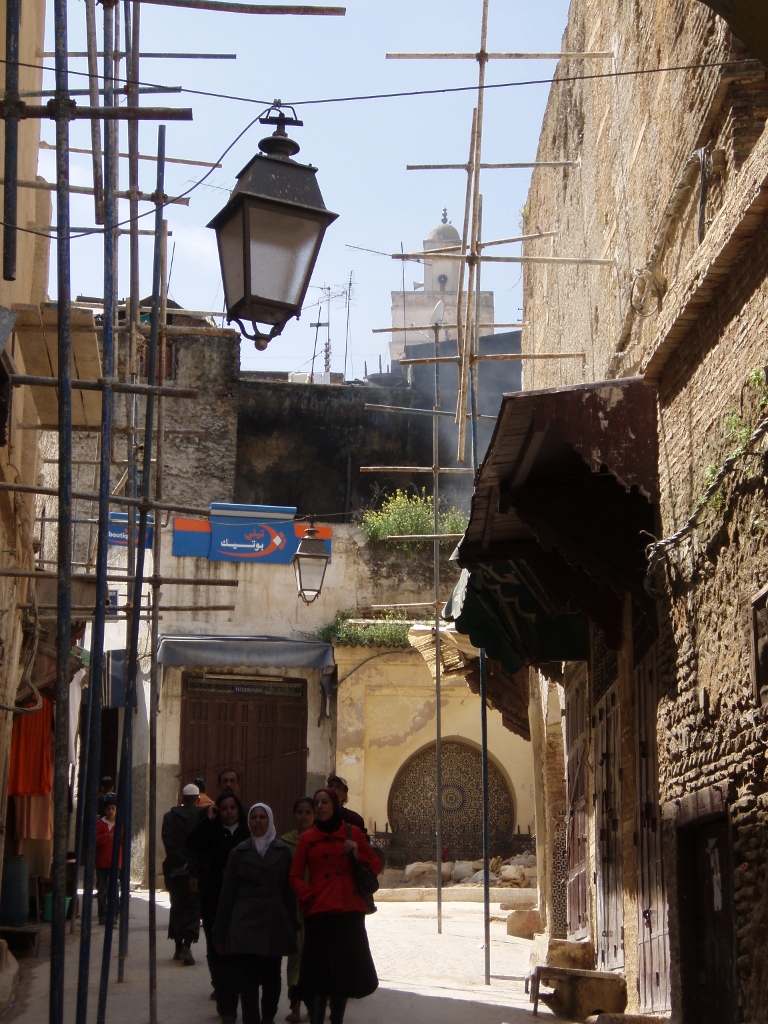 Fes, a detail
Fes, a detail
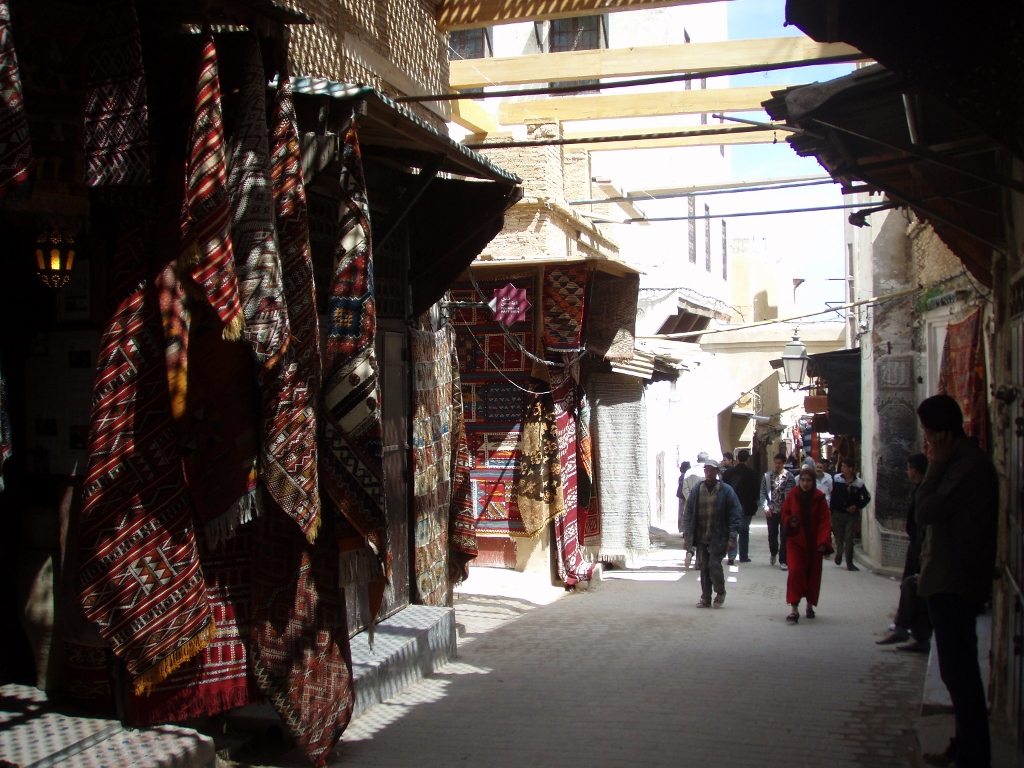 Fes, a detail
Fes, a detail
Along the way, I saw local residents and could only confirm what I had already heard – that younger generations are much more relaxed about clothing, especially when it comes to women. Of course, they still wore headscarves (I didn’t, and there were no issues with that), but their clothing showed fewer traditional elements. In fact, compared to some of the girls, I appeared more conservatively dressed. But that was perfectly fine. They know the local customs and language, I don’t.
There are about 300 mosques in the Medina of Fes and some of them are very old, dating back to the 13th and 14th centuries. One of them is the Ash-Sherabliyin Mosque, which can be seen from the main street. Its name is transcribed into Latin script in two quite confusingly different ways – Ash-Sherabliyin and Chrabliyine.
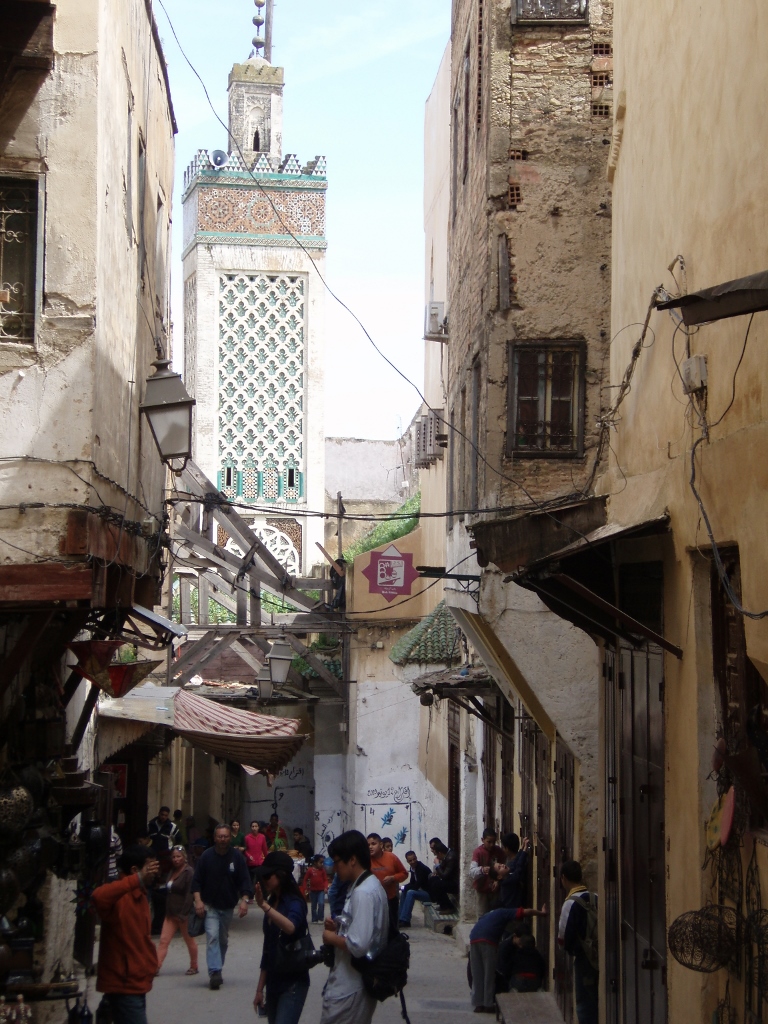 Fes, a detail
Fes, a detail
In any case, one of its notable features is the white minaret with green decoration.
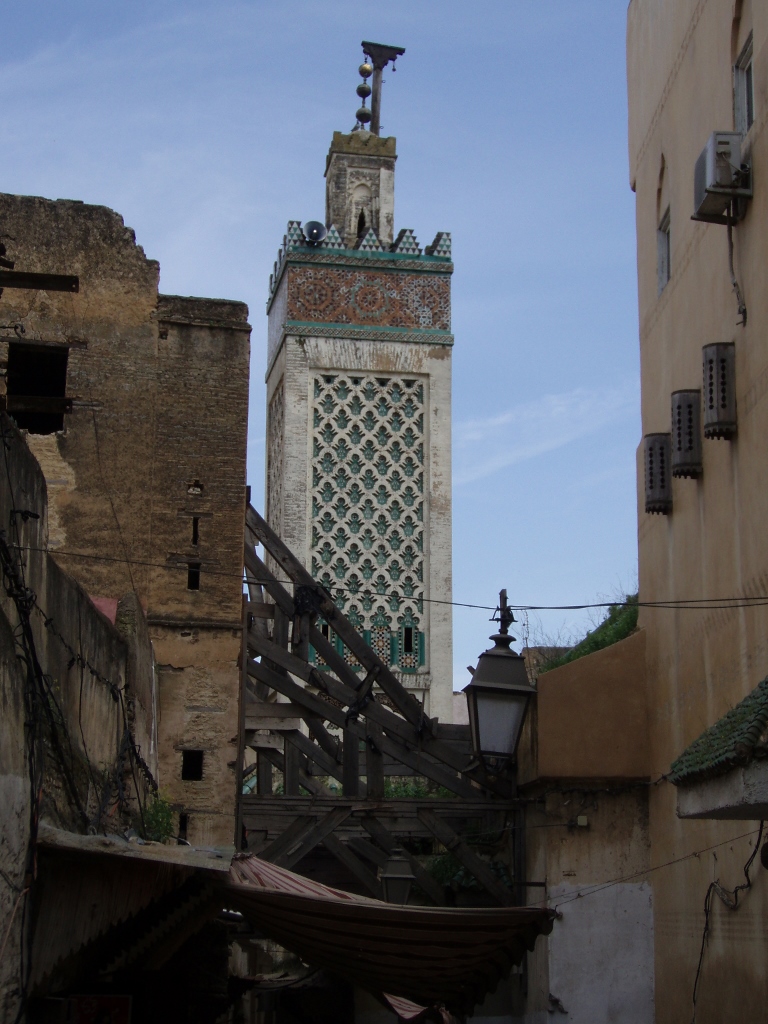 Fes, a detail
Fes, a detail
From here, I continued my walk, admiring the beauty of the details that can be seen in Fes el-Bali.
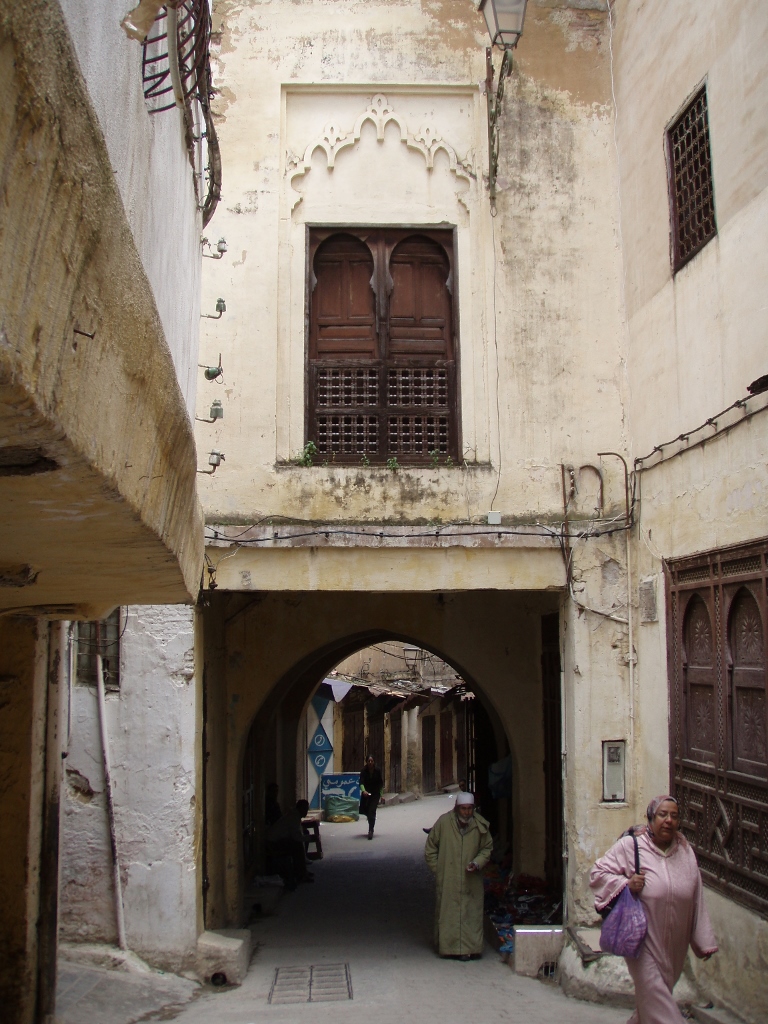 Fes, a detail
Fes, a detail
Thus I arrived at the Nejjarine Museum of Wooden Arts & Crafts, located at the Nejjarine Square, where the Nejjarine Fountain can also be found.
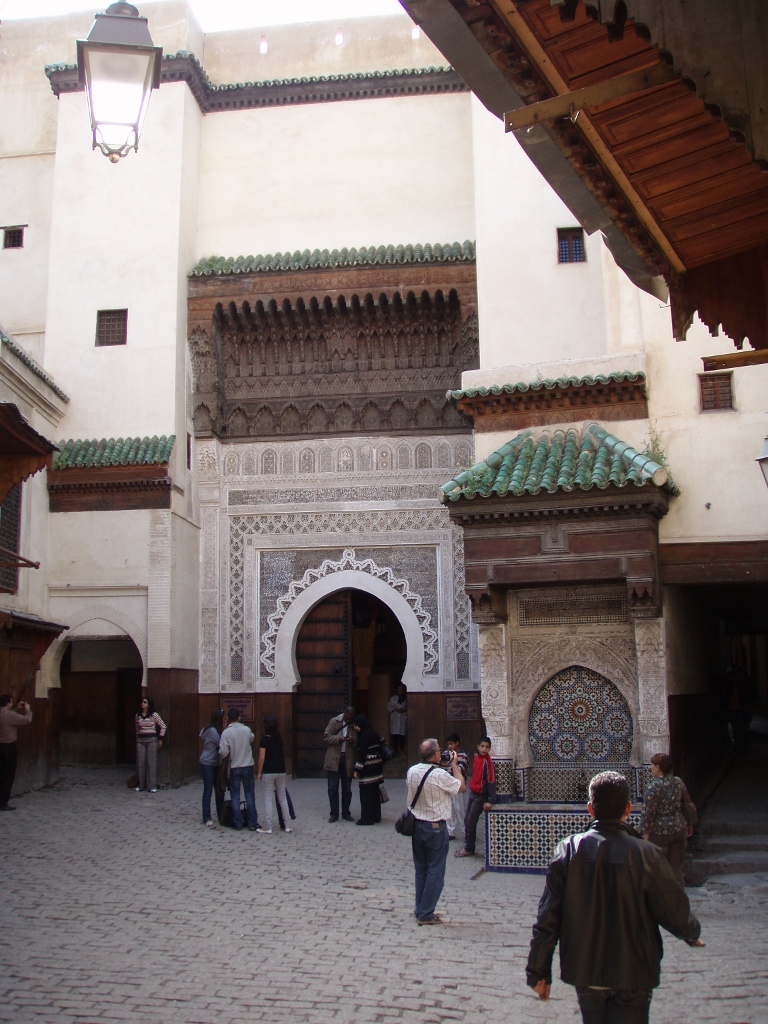 Fes, a detail
Fes, a detail
This is all located in the area of Souq an-Nejjarine, which actually means Carpenter Souq, explaining both the frequent use of the name and why a museum dedicated to wood as a material is located in this part of the Medina.
The museum is housed in a beautifully restored 18th-century former caravanserai (funduq), where travelling merchants used to stay and store their goods, which they would sell in front of the building.
I thoroughly visited the museum, but I only filmed impressive details related to the building itself, such as the entrance and the inner courtyard/atrium covered with glass panels that let in natural light. The main reason I didn’t film any of the exhibits was that photography wasn’t allowed.
 Fes, a detail
Fes, a detail
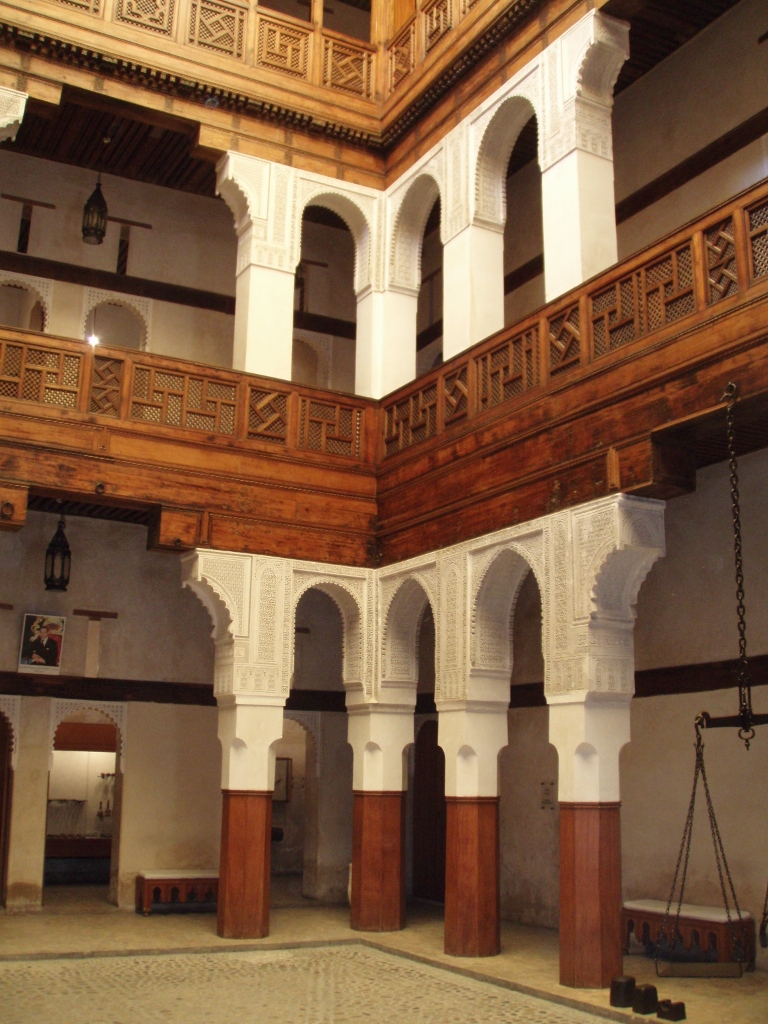 Fes, a detail
Fes, a detail
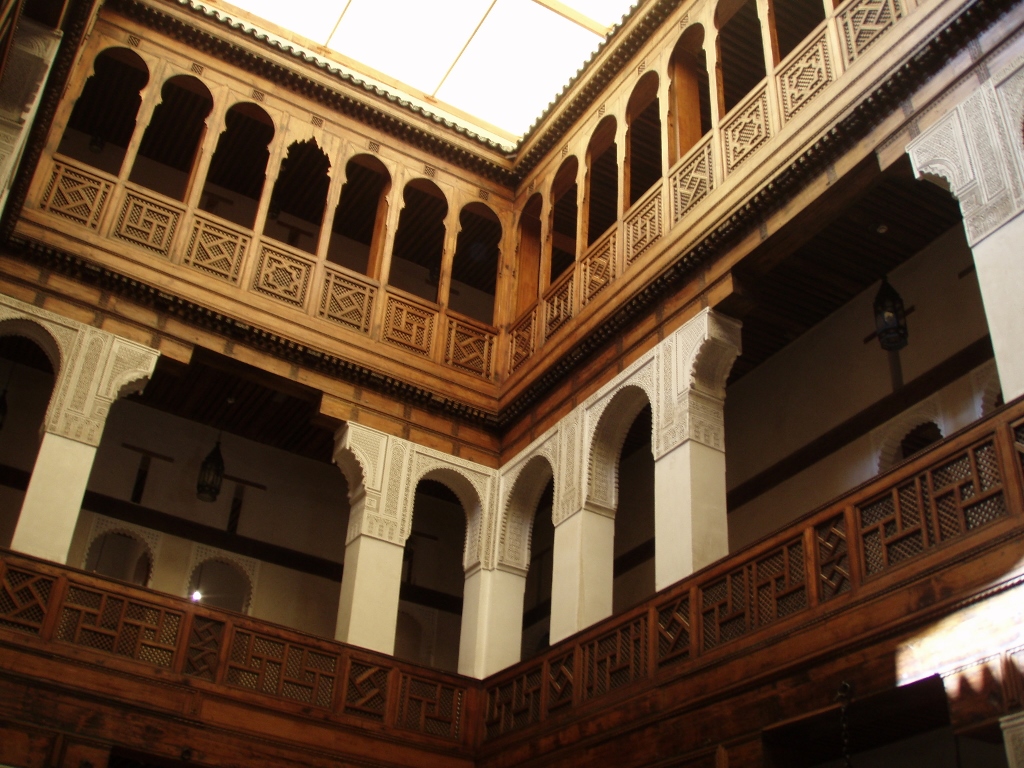 Fes, a detail
Fes, a detail
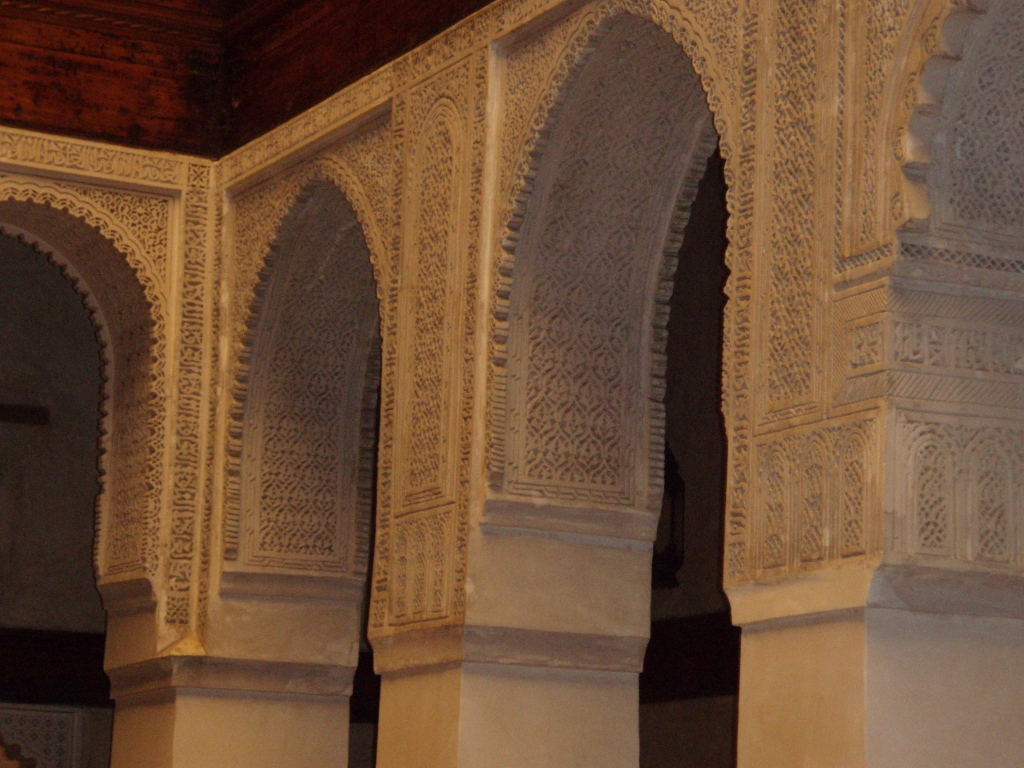 Fes, a detail
Fes, a detail
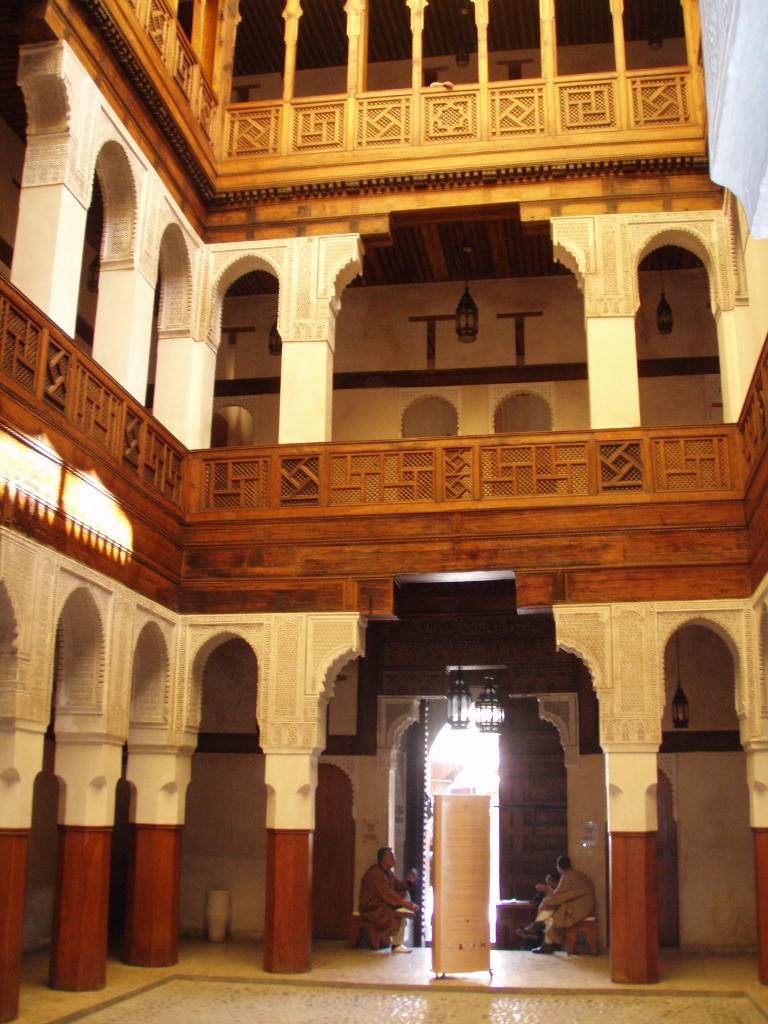 Fes, a detail
Fes, a detail
What made the visit even more special for me was the fact that the museum had a terrace at the top of the building, where one could enjoy a wonderful view in all directions. However, as I climbed to the top, I also had the chance to enjoy the exquisite decoration of the former caravanserai through one of the windows.
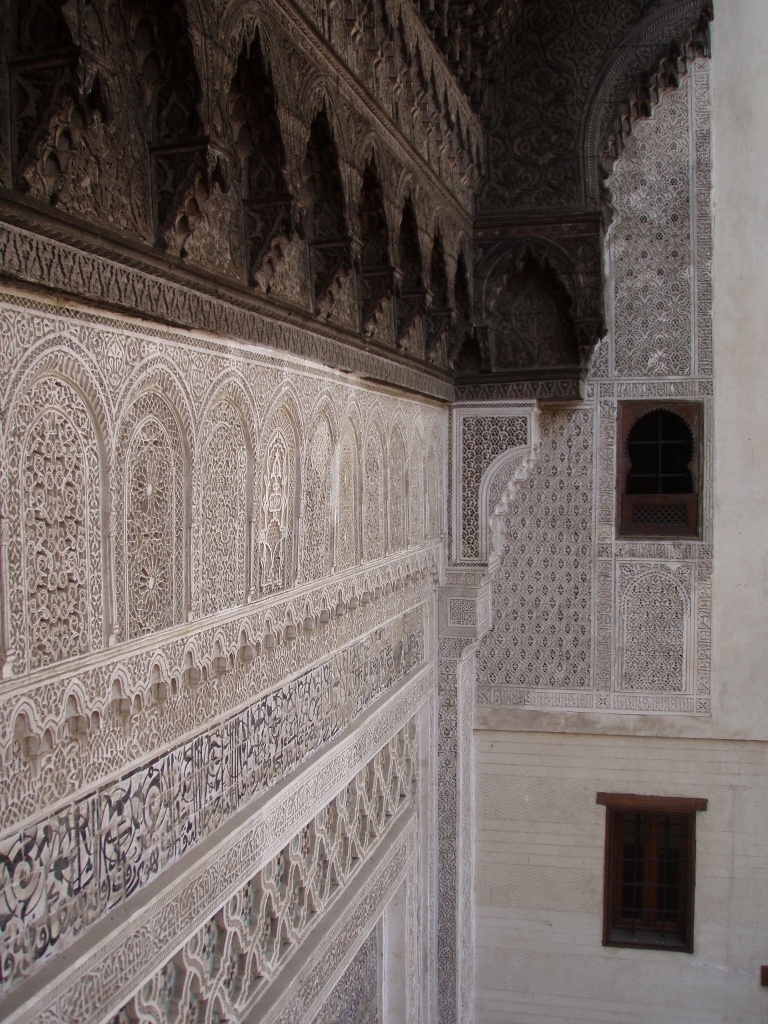 Fes, a detail
Fes, a detail
And when I reached the top of the building, the view was truly beautiful.
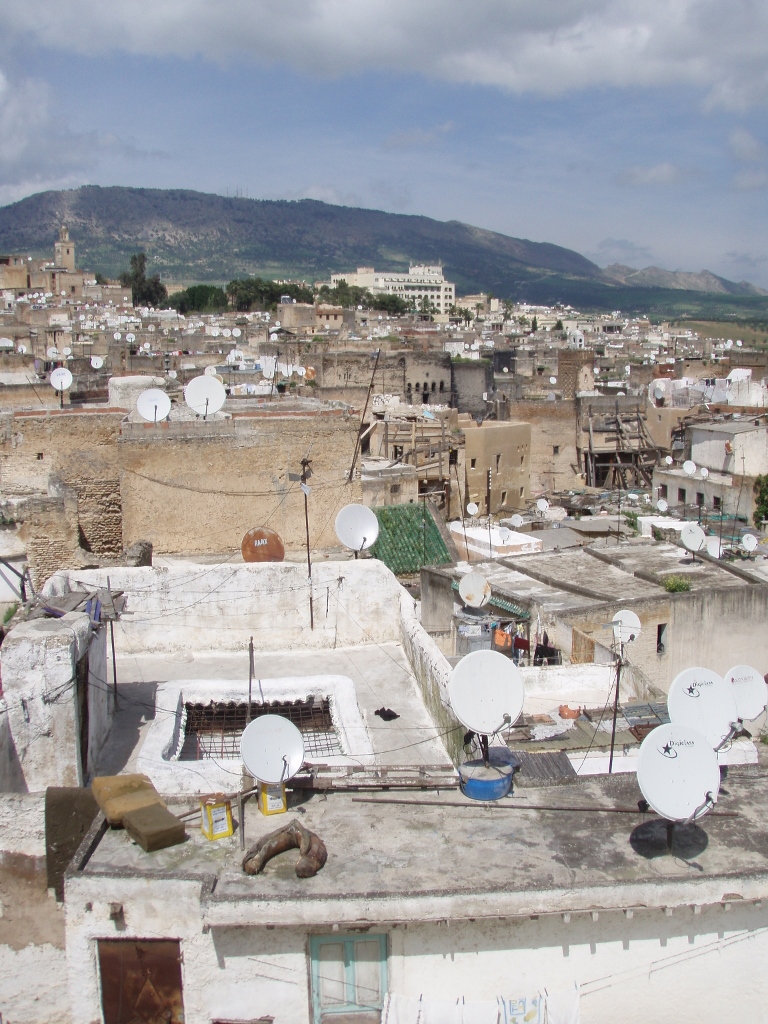 Fes, a detail
Fes, a detail
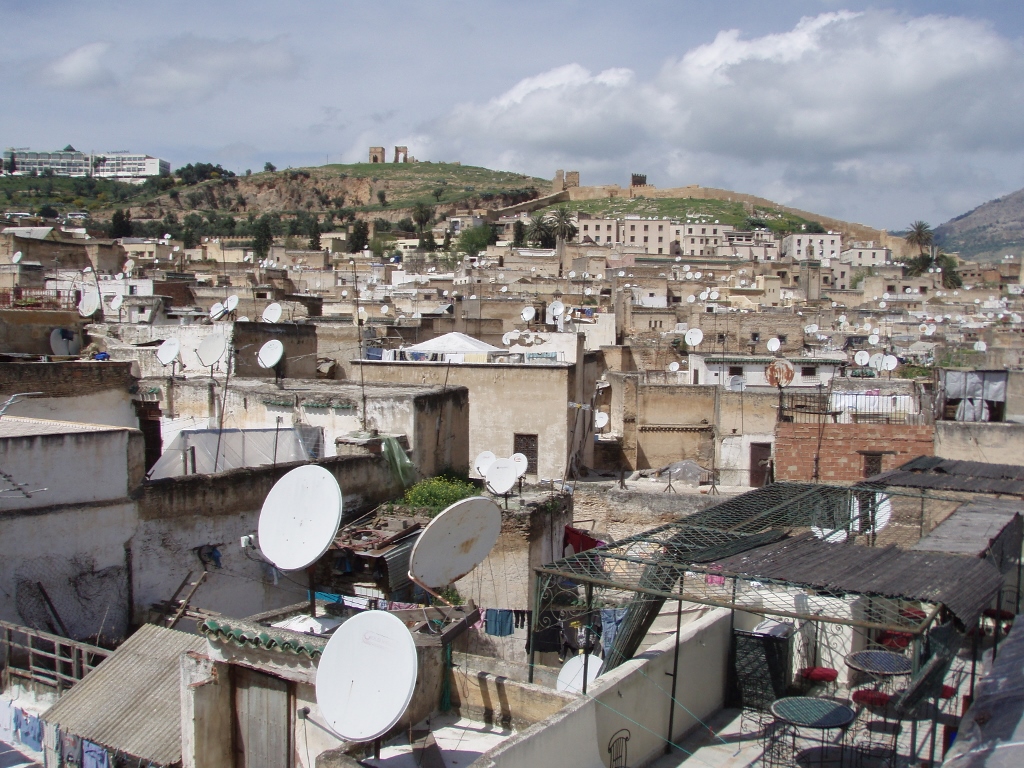 Fes, a detail
Fes, a detail
From here, I could also see parts of the Zawiyya Moulay Idriss II. A zawiyya is an Islamic shrine typically built across North Africa, serving as a monastic complex, often a centre for a Sufi (mystical) brotherhood, and sometimes also a mausoleum, as in this case. Here, you can find the tomb of Moulay Idriss II (b/r 791/803–828), who was the son of Moulay Idriss I, the founder of the first imperial dynasty in Morocco, and also the founder of Morocco itself.
 Fes, a detail
Fes, a detail
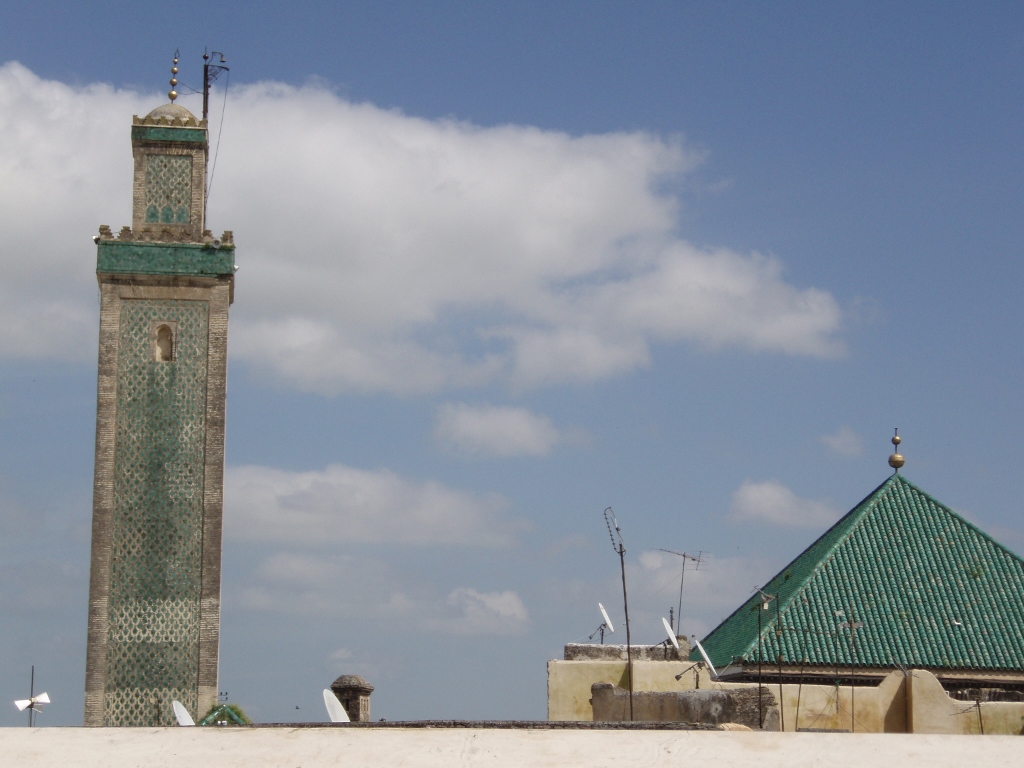 Fes, a detail
Fes, a detail
Here, at the top of the museum, I took advantage of the surroundings and placed my camera in a convenient spot in order to take a photo of myself.
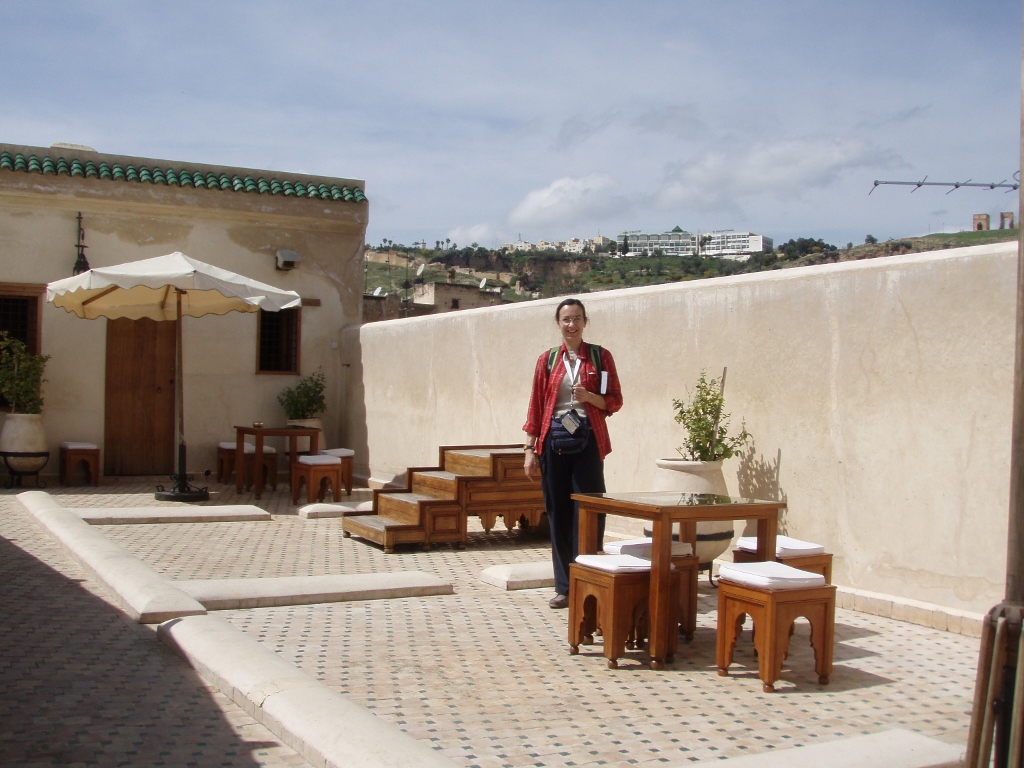 Me in Fes
Me in Fes
After this, I went down to the square and then entered the space of the Henna Souq. Under normal circumstances, you can buy natural hair dye there, but also have skilled women draw intricate henna designs on your hand. I wasn’t interested in that, as I had done it before, but even if I were, I wouldn't have been able to, as it was already Friday afternoon and most of the shops and stalls were closed.
 Fes, a detail
Fes, a detail
In addition to henna, pottery is also sold here. Of course, that is when the shops are open.
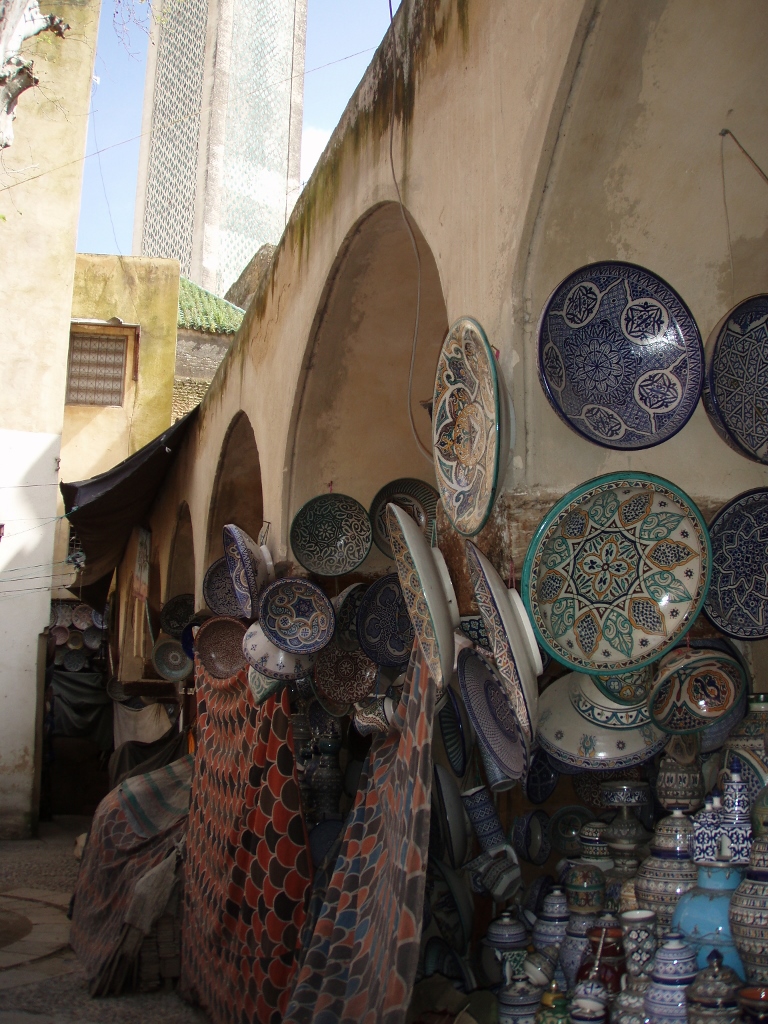 Fes, a detail
Fes, a detail
But from here, I could also see the minaret of the mosque within the Zawiyya Moulay Idriss II.
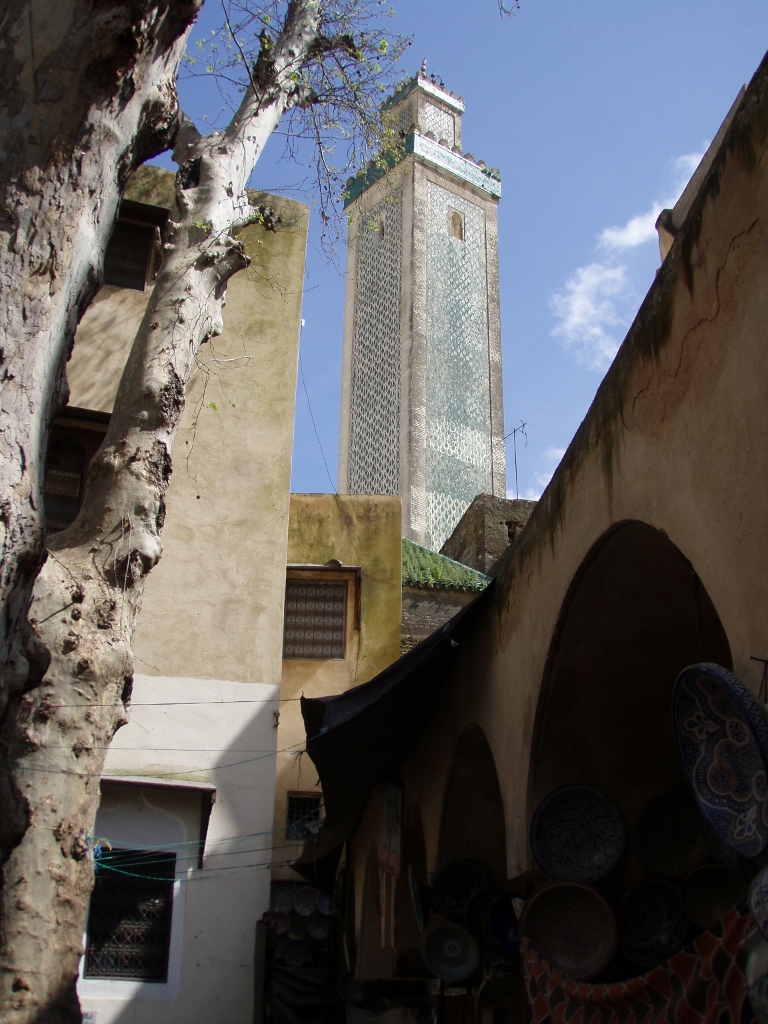 Fes, a detail
Fes, a detail
However, since it was Friday, the passage to the mausoleum was closed, so a friendly man I started talking to here took me to the roof of a nearby building. From there, I was able to get a great view of the minaret, as well as the nearby rooftops and minarets of the Al-Karaouine University/Mosque.
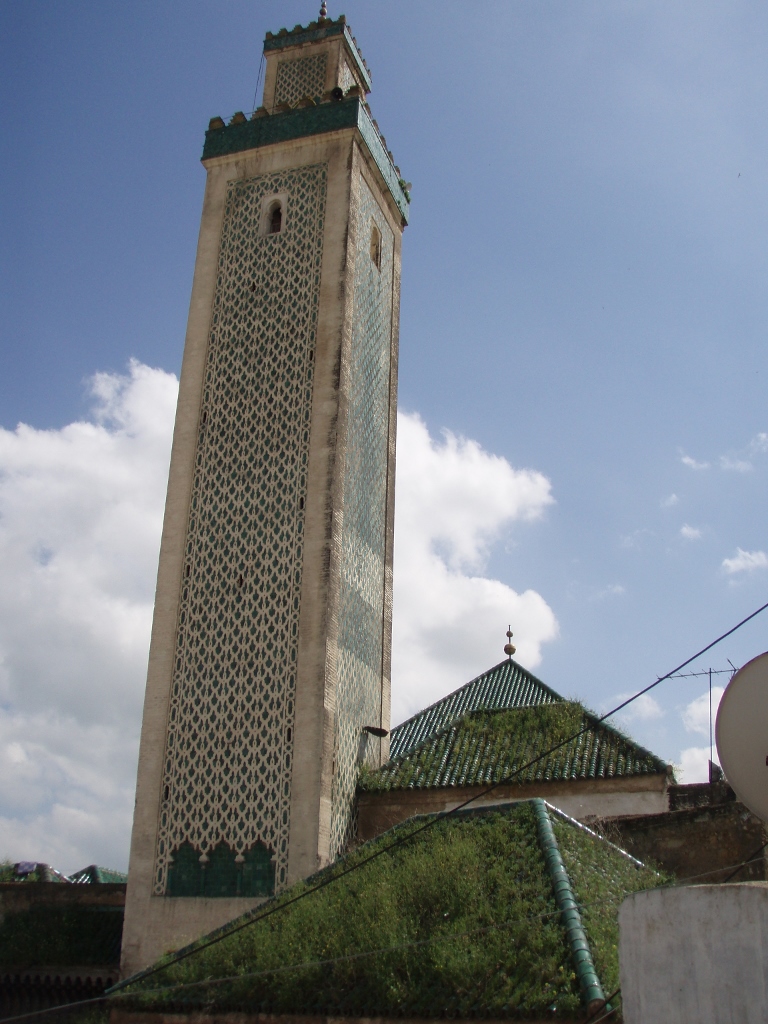 Fes, a detail
Fes, a detail
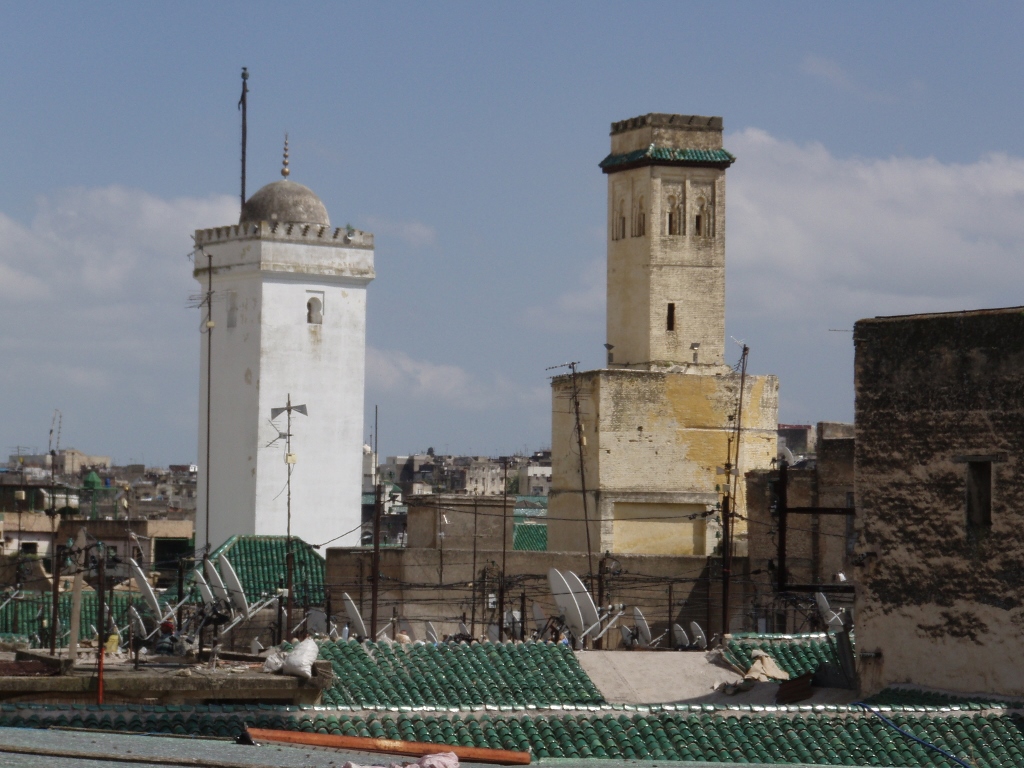 Fes, a detail
Fes, a detail
At this point, I clearly realised that Friday afternoon is not the best time to visit significant buildings in Fes (right nearby is also the Madrasa el-Attarine from 1325). It wasn’t just because Friday is a holy day, but also because it was lunchtime. So, I understood that I should join the local customs and headed towards a good hotel, as I decided to give myself a treat.
However, it should be emphasised that the aforementioned buildings are incredibly beautiful and absolutely worth a visit. I’ll have to leave that for another occasion since I didn’t manage to visit them in 2010.